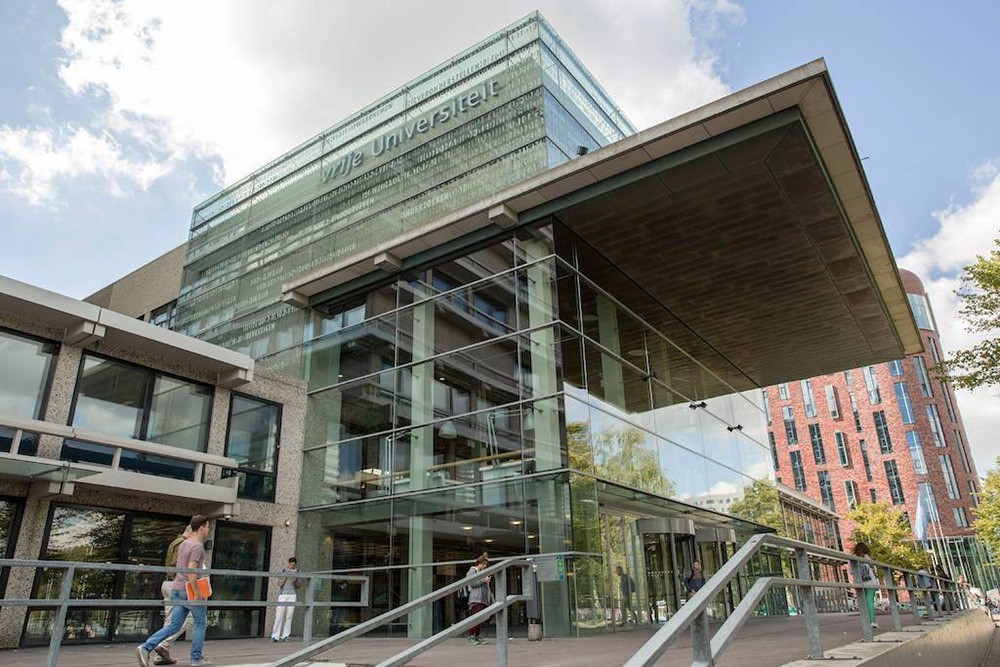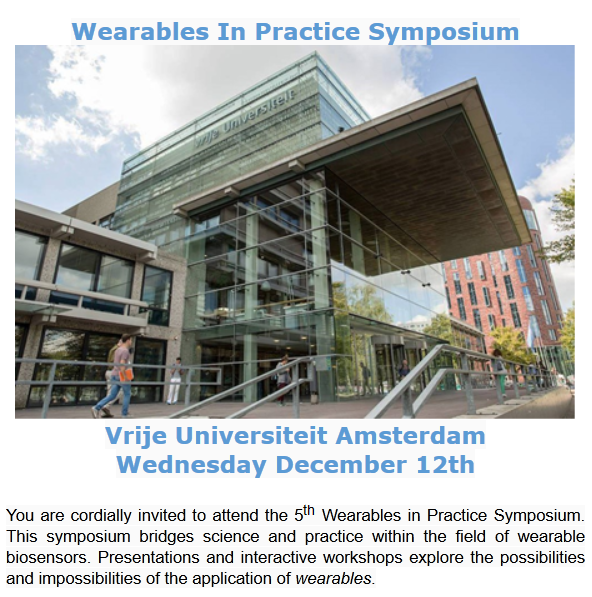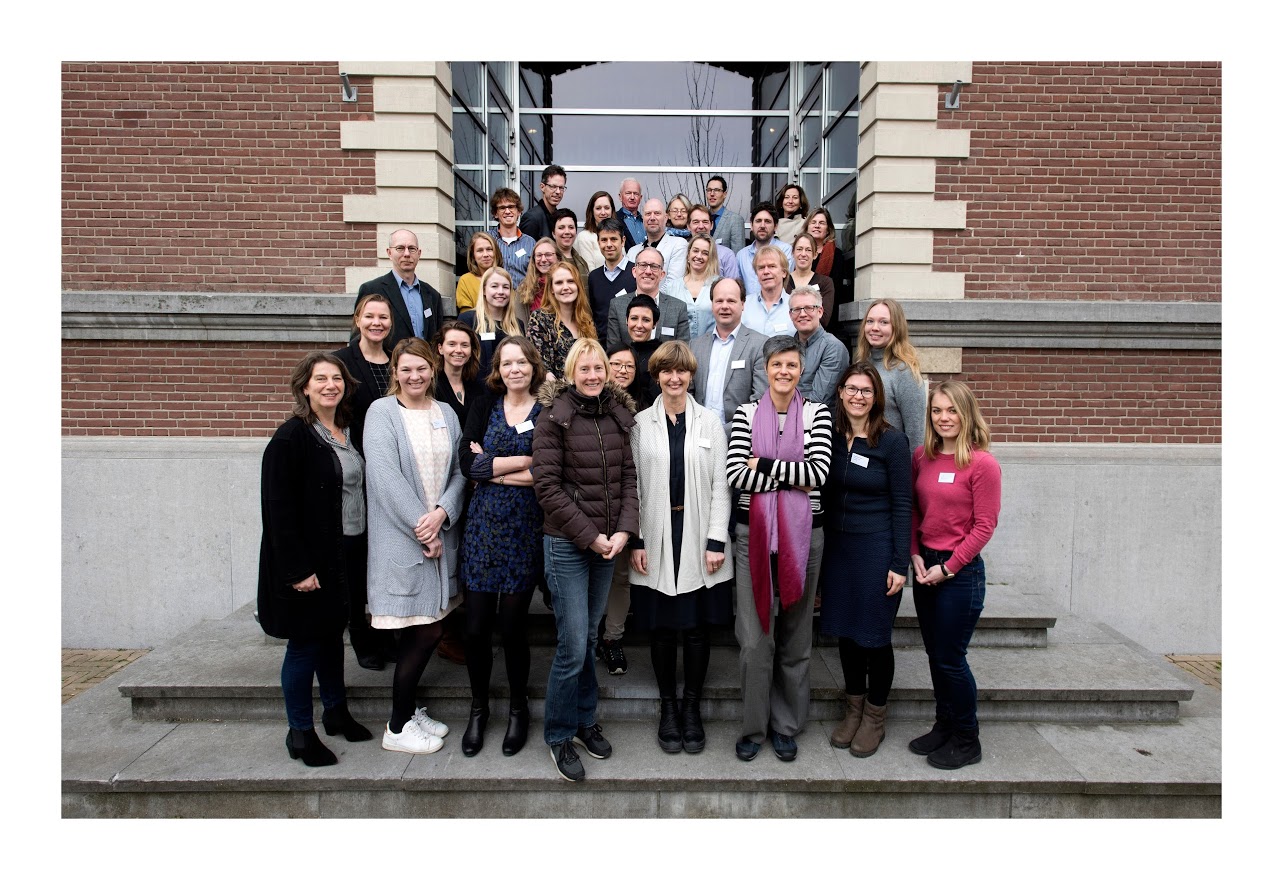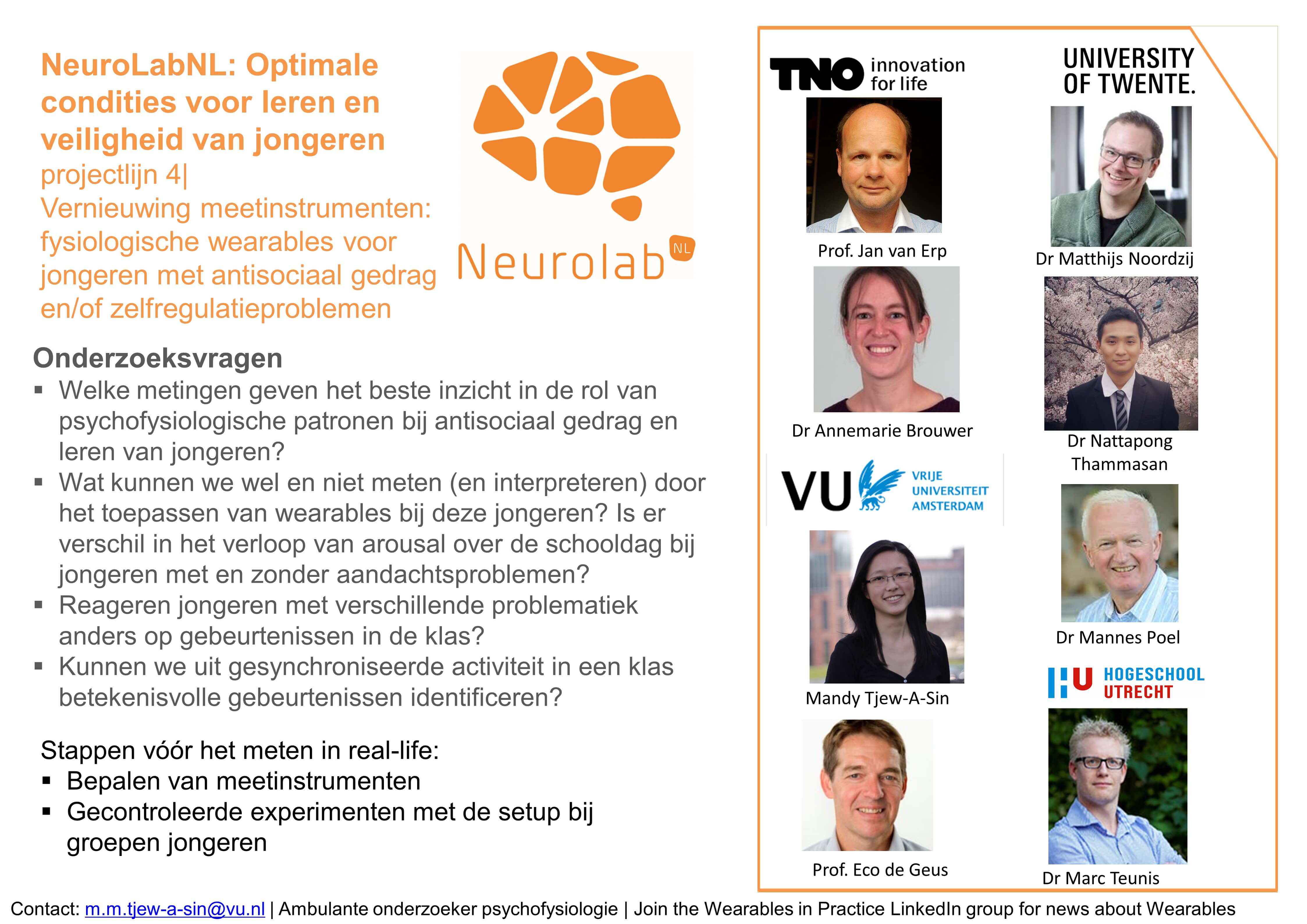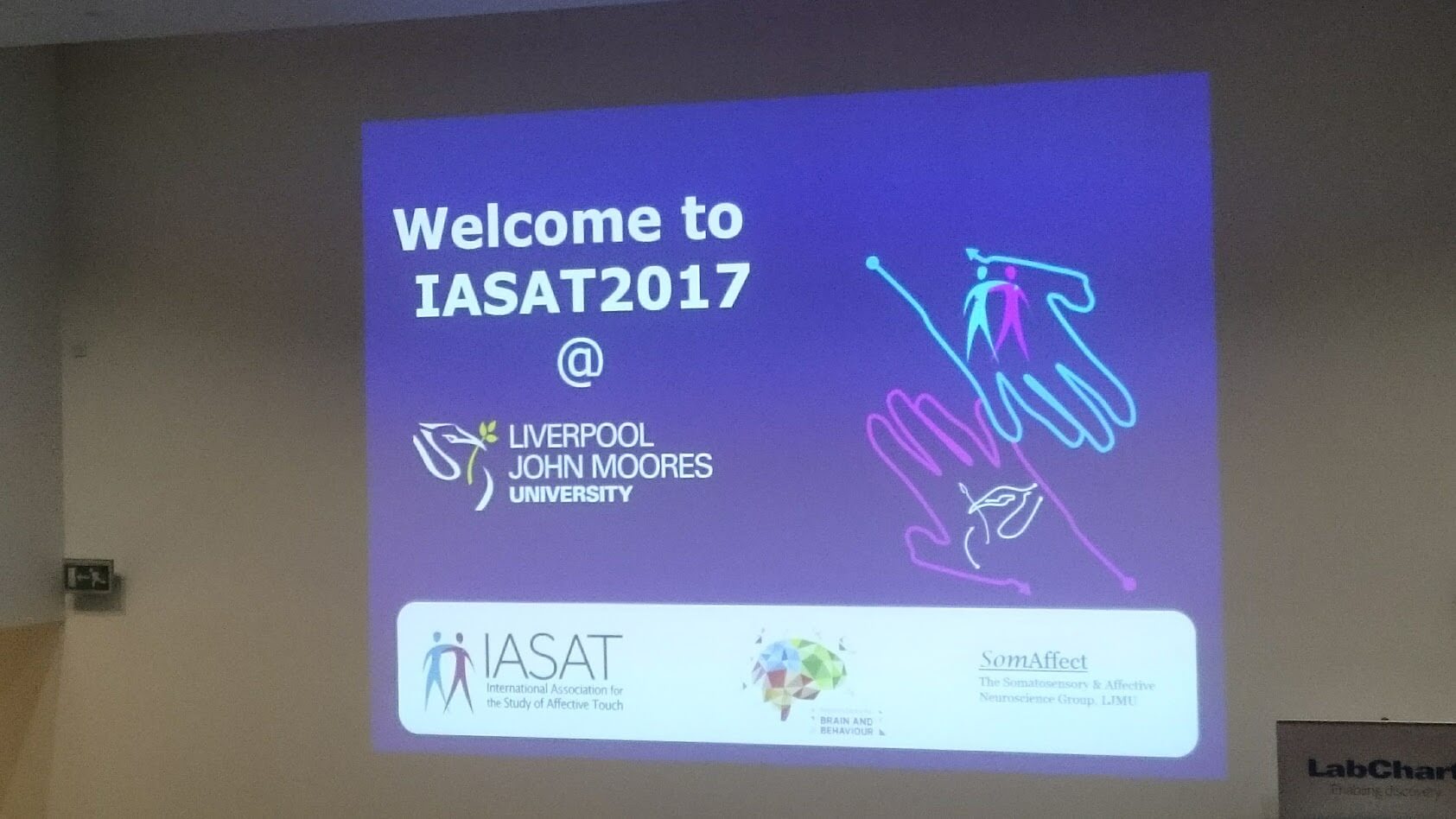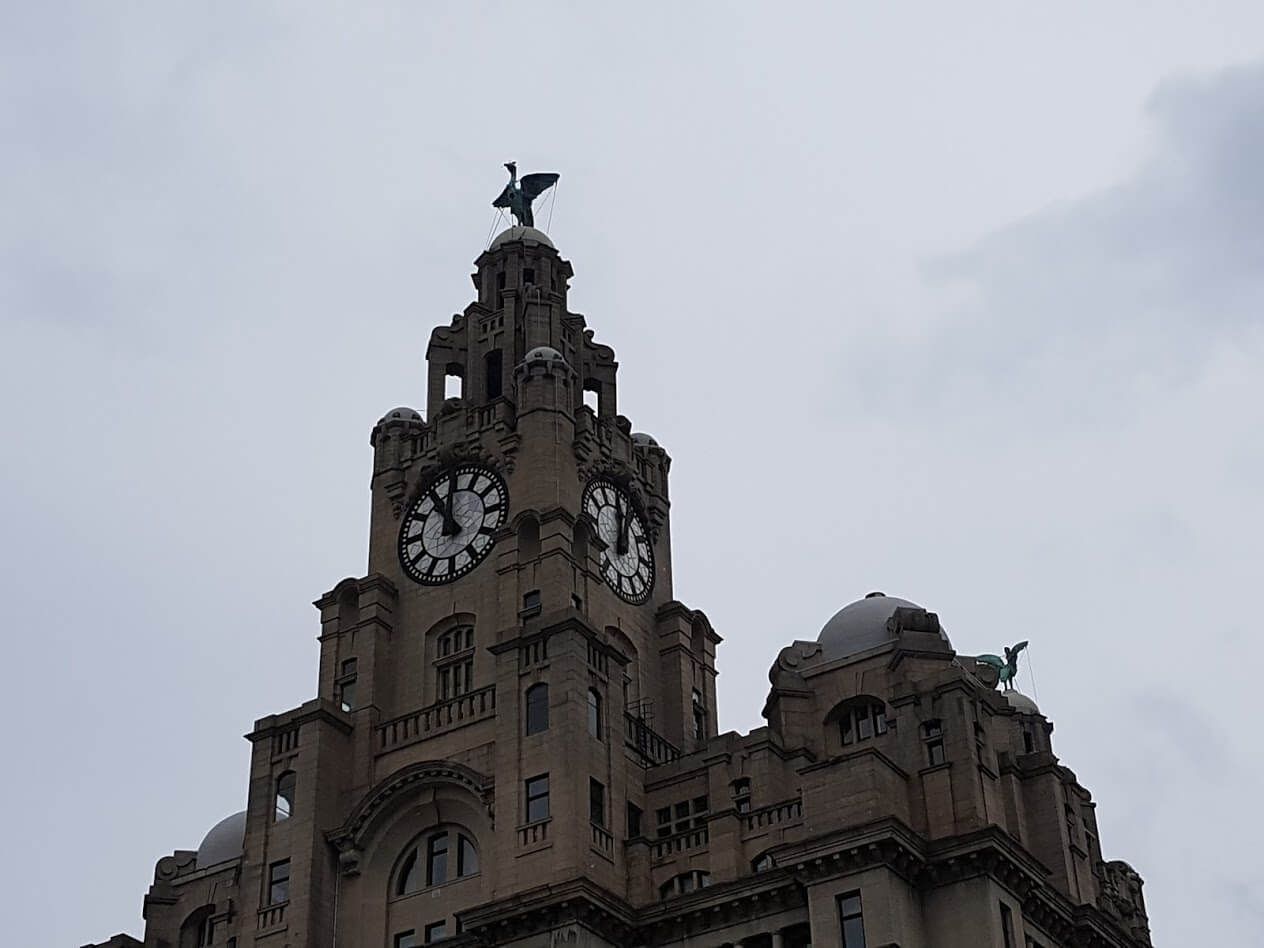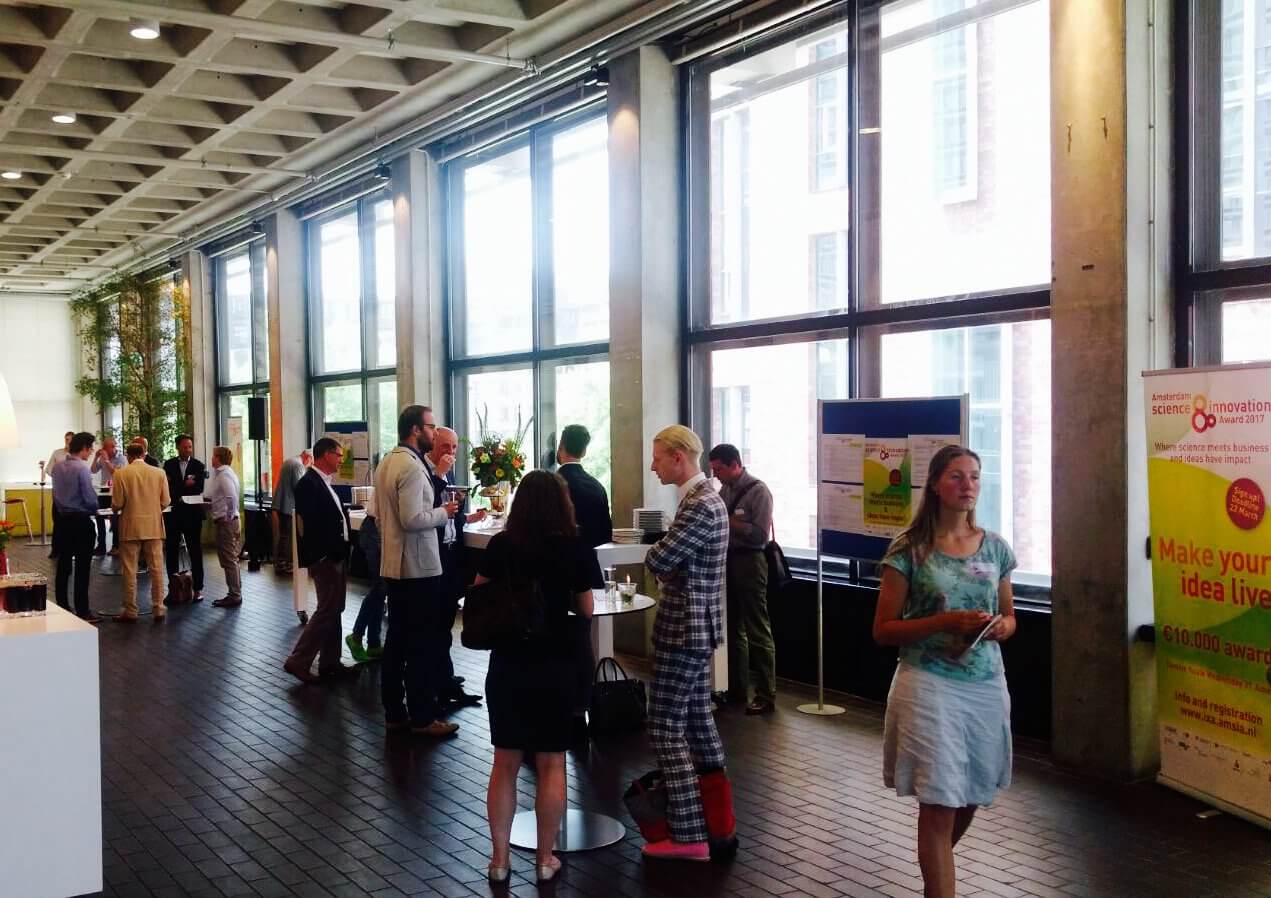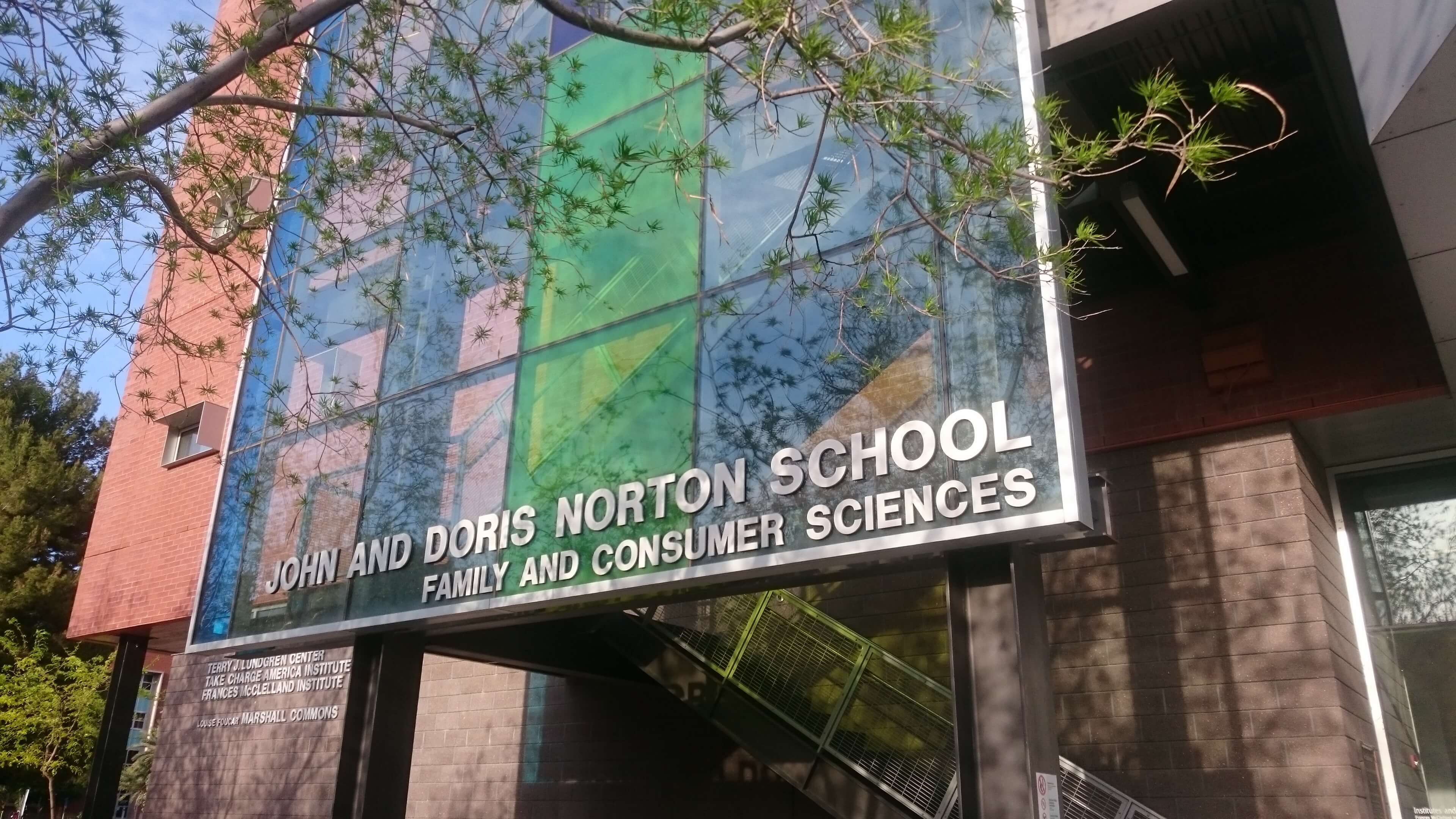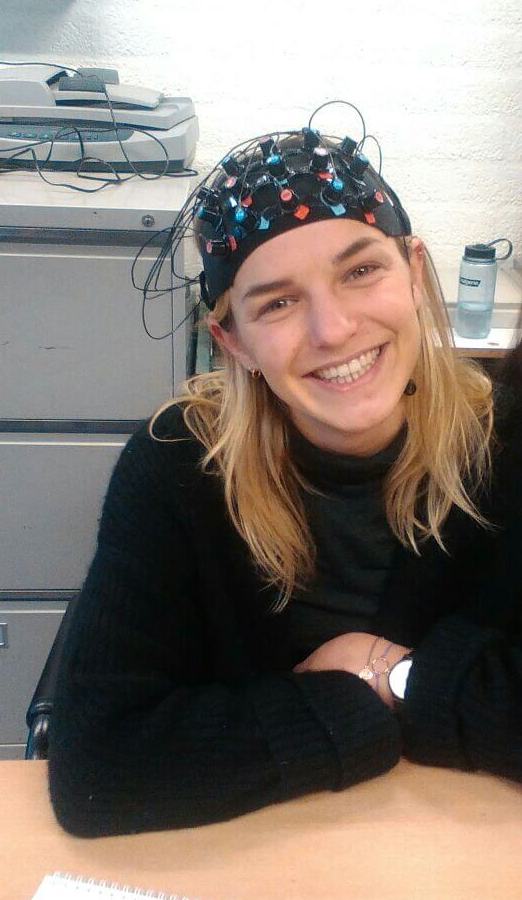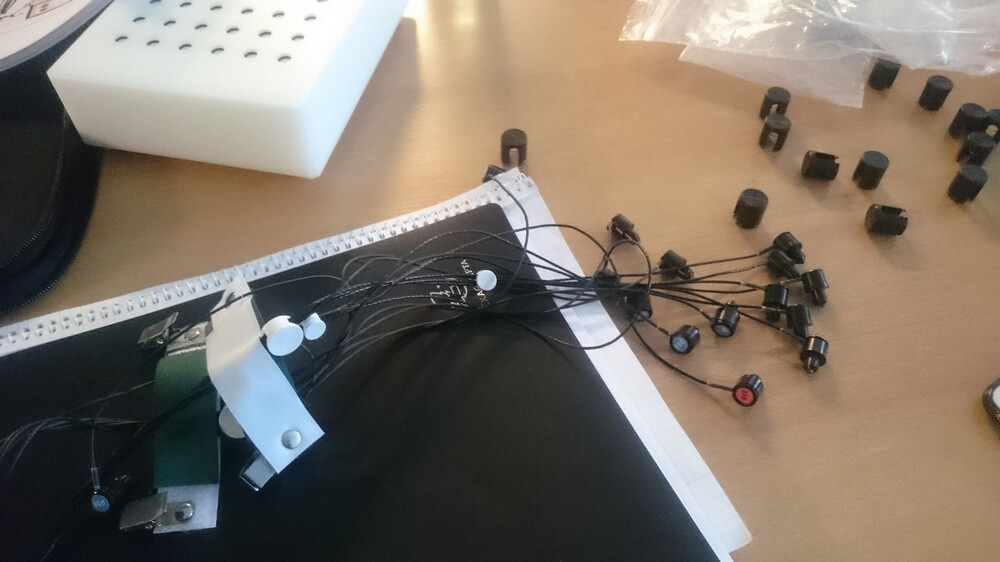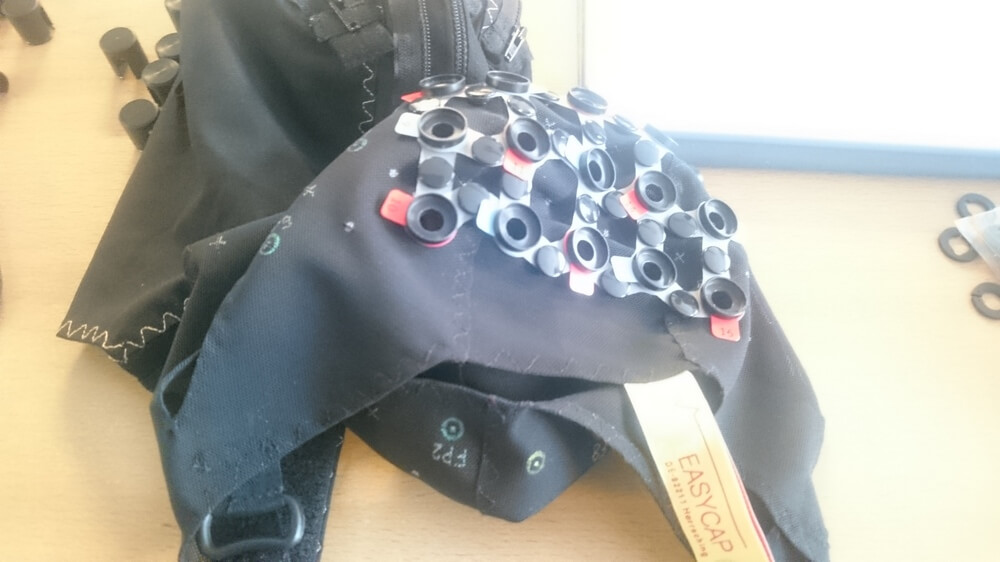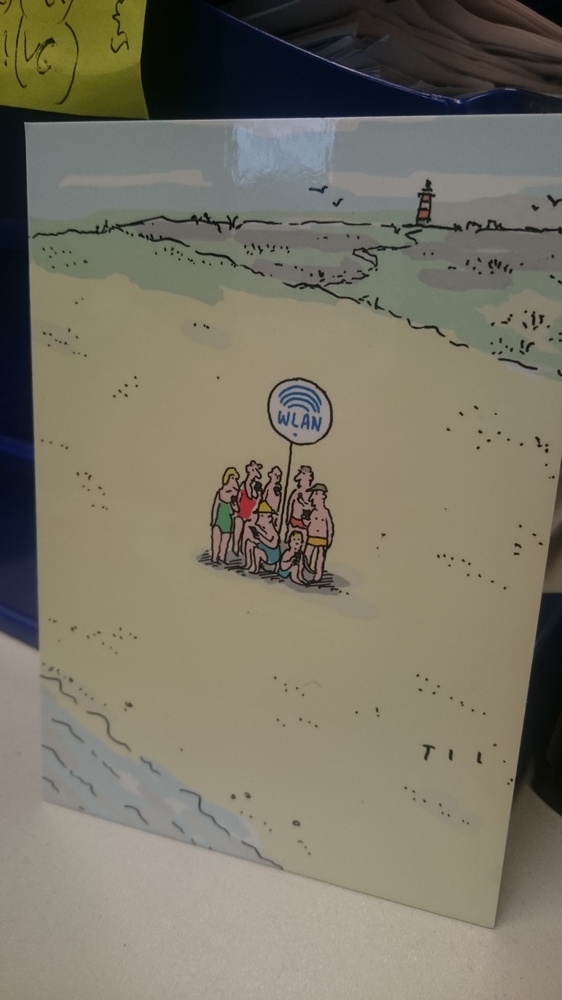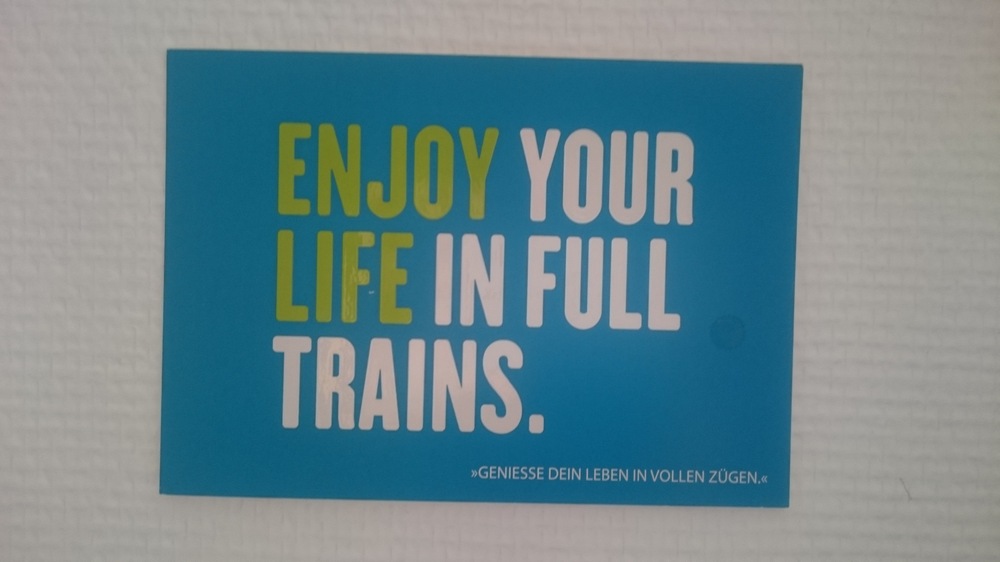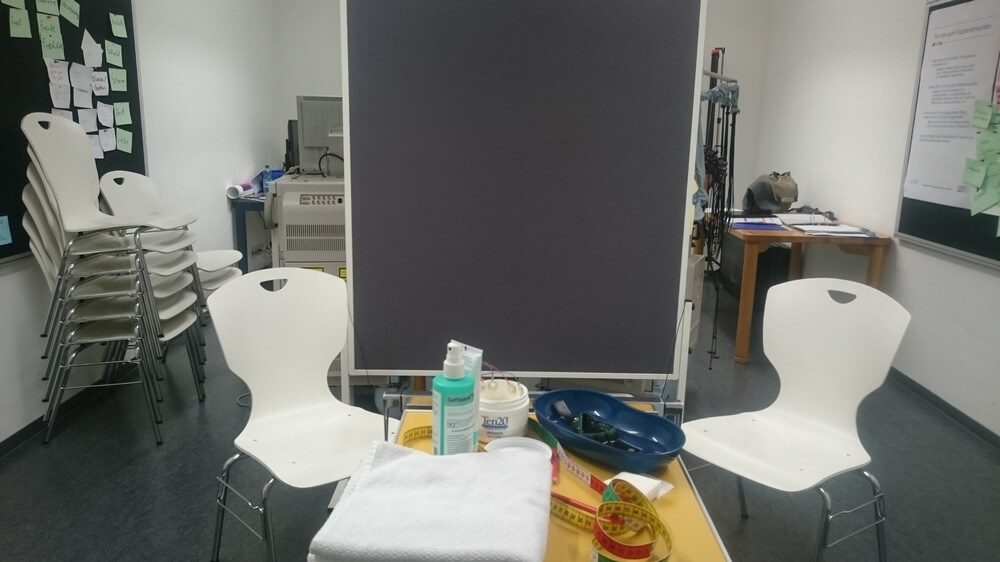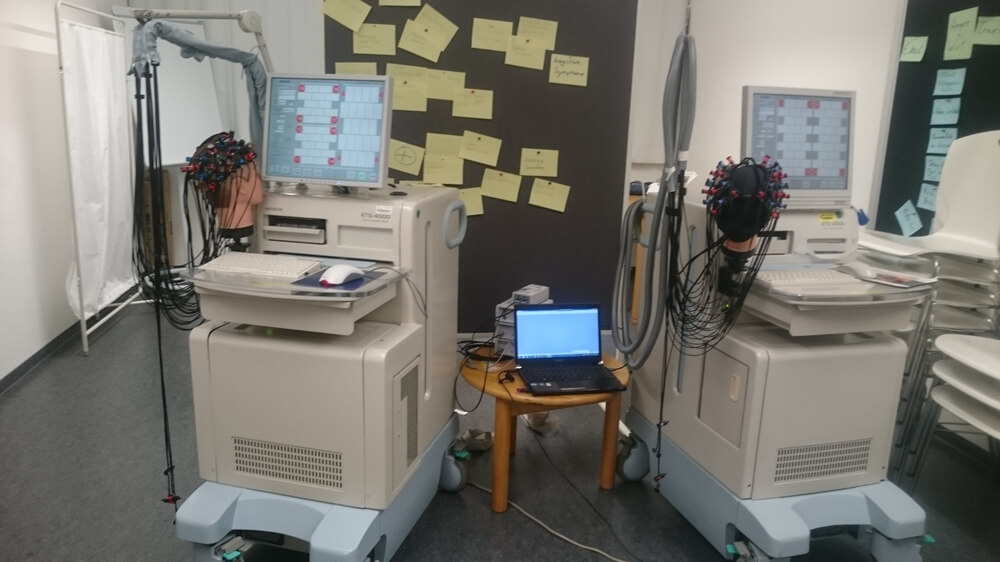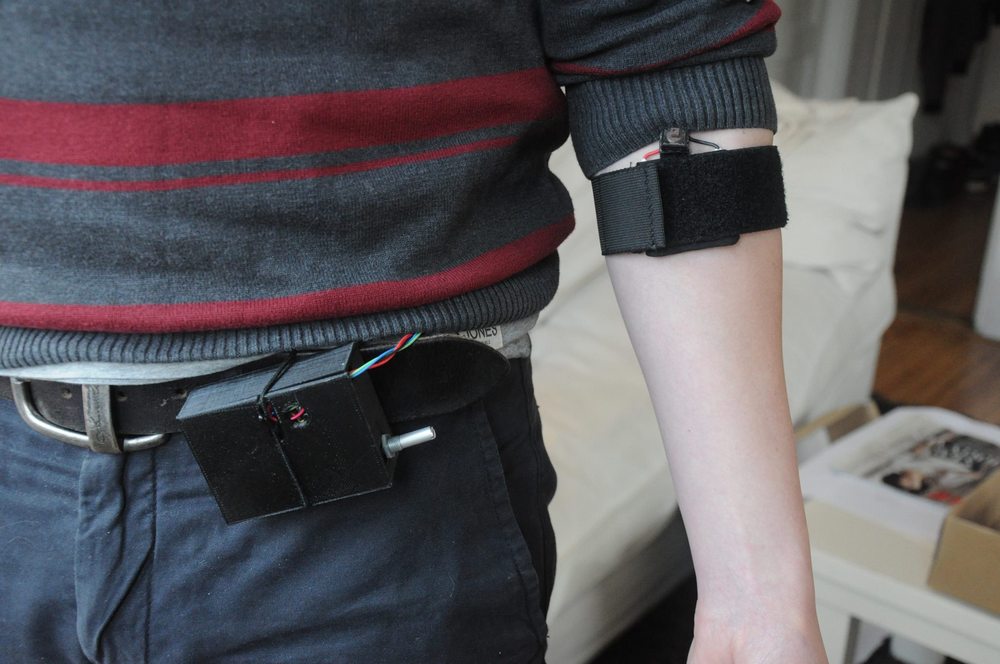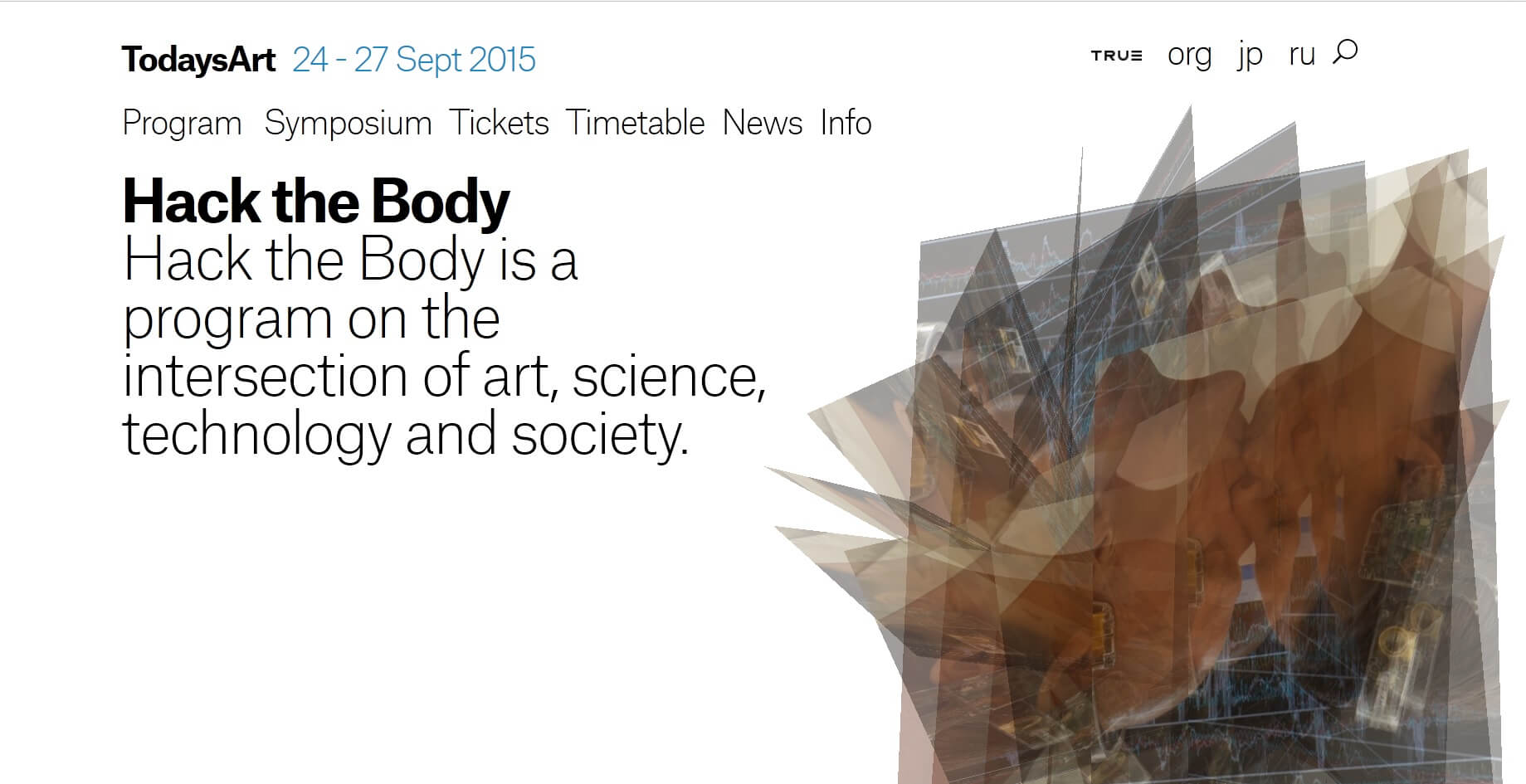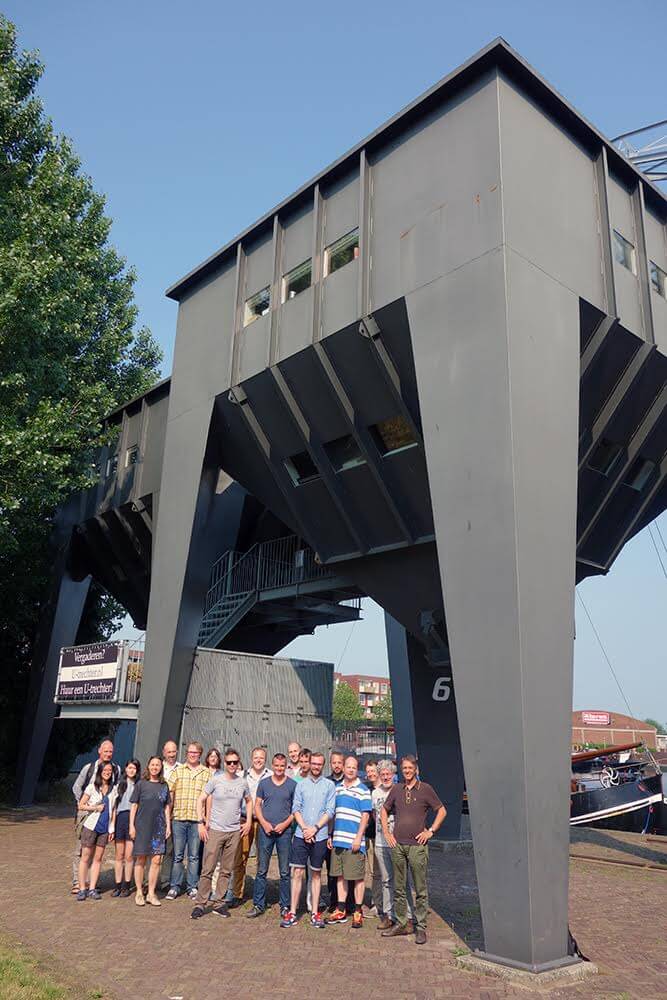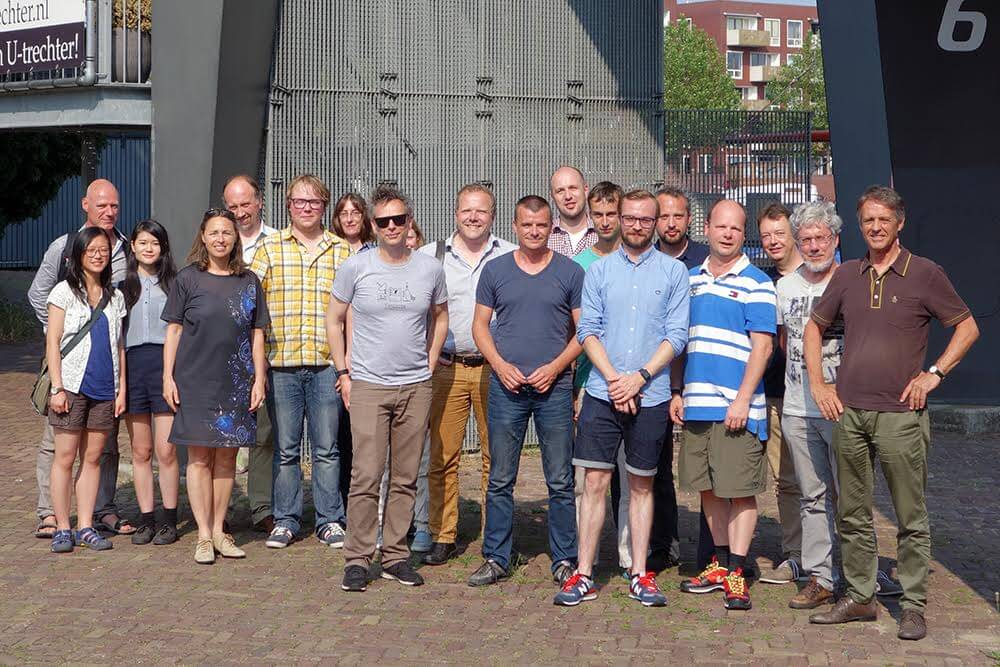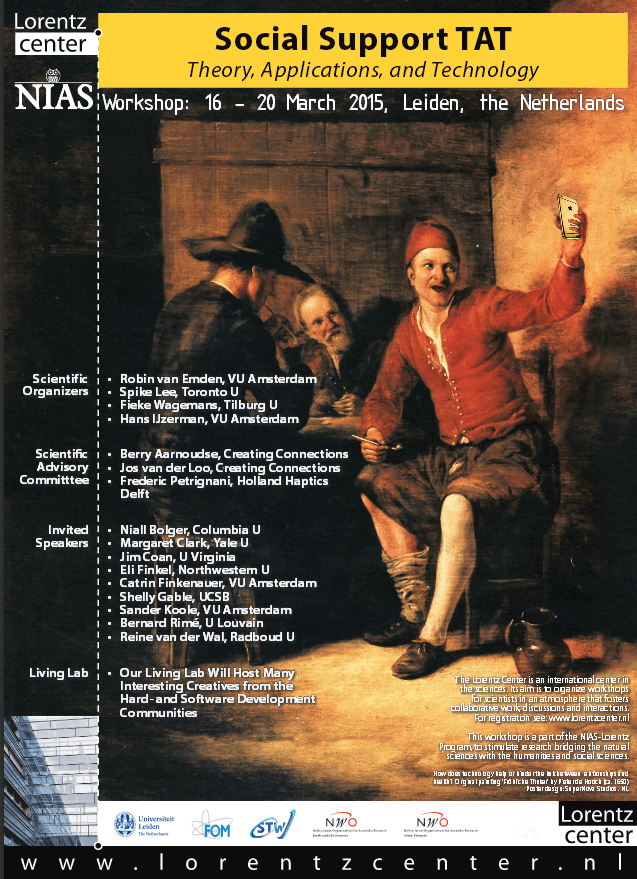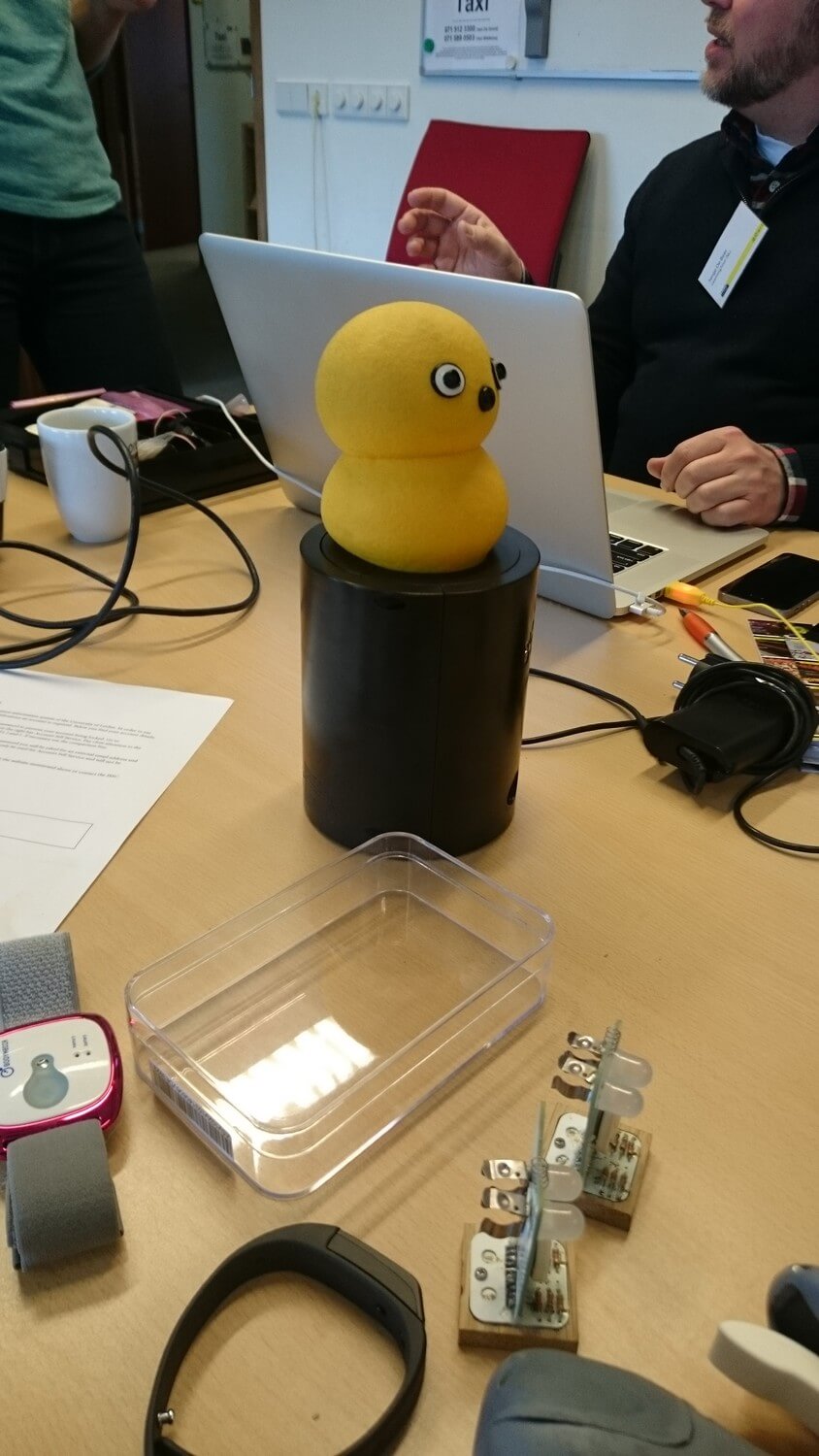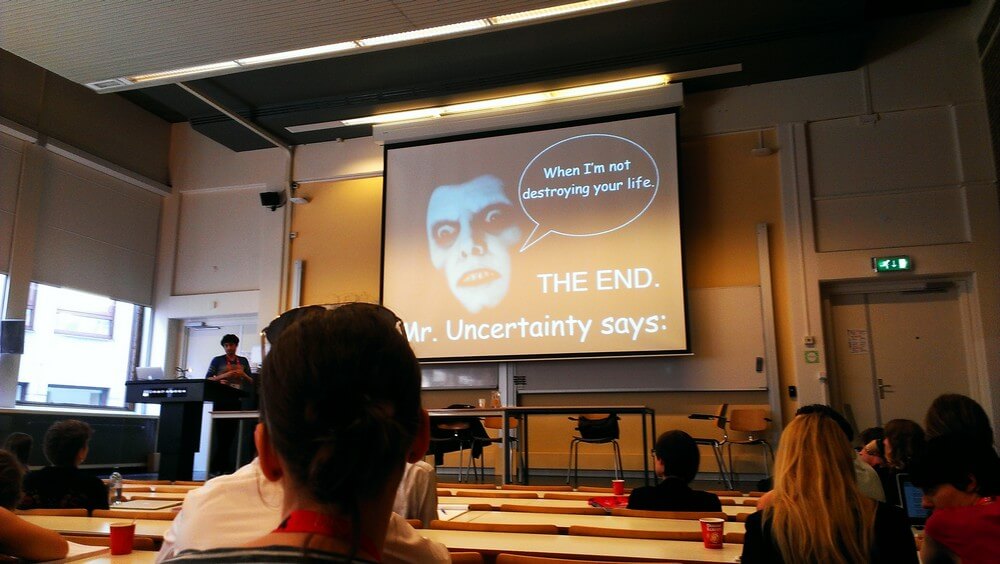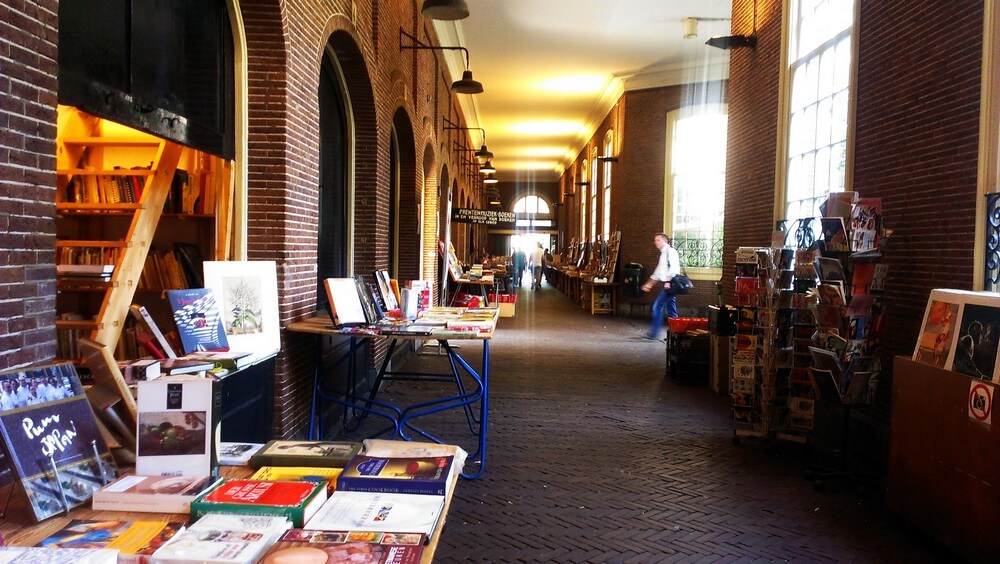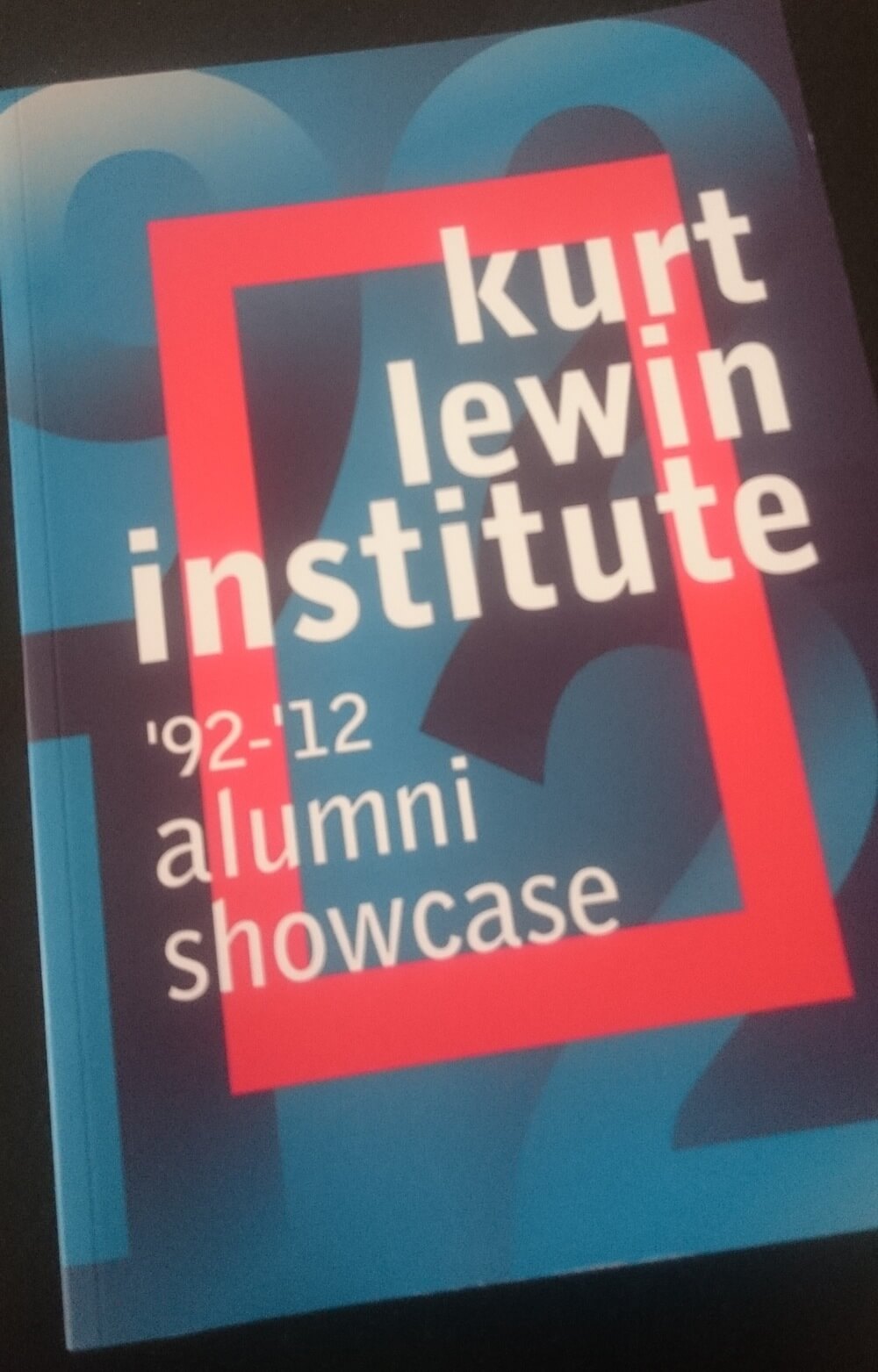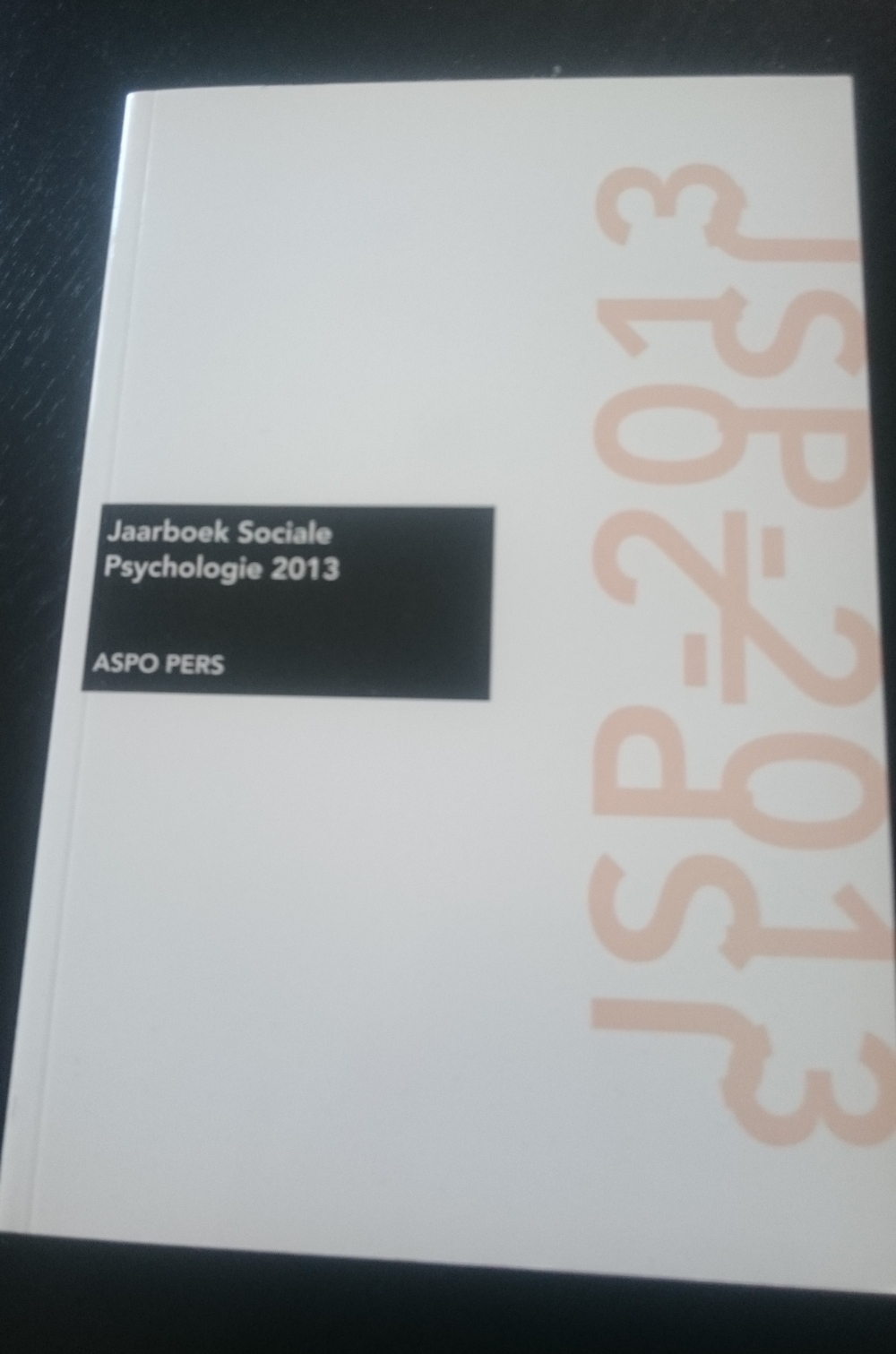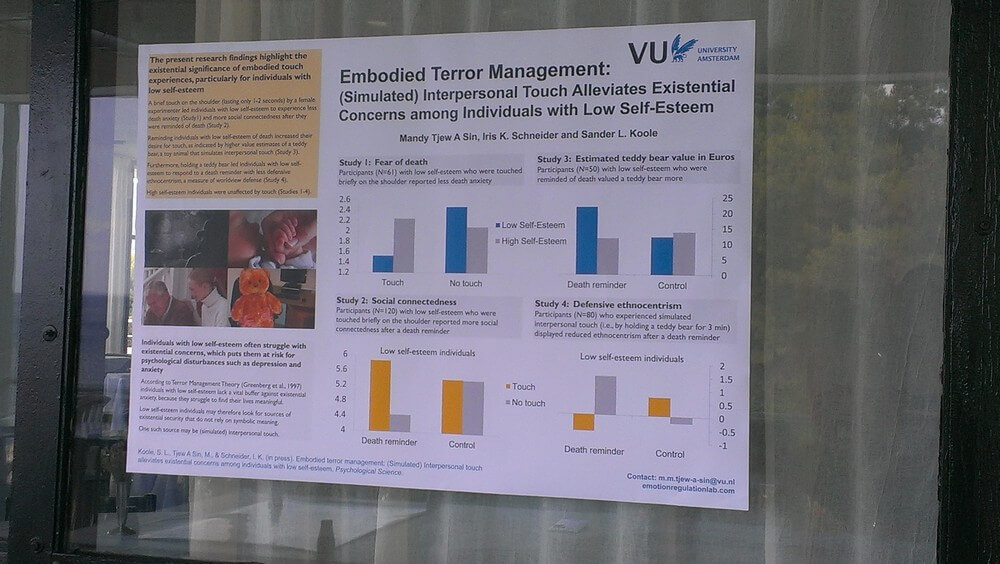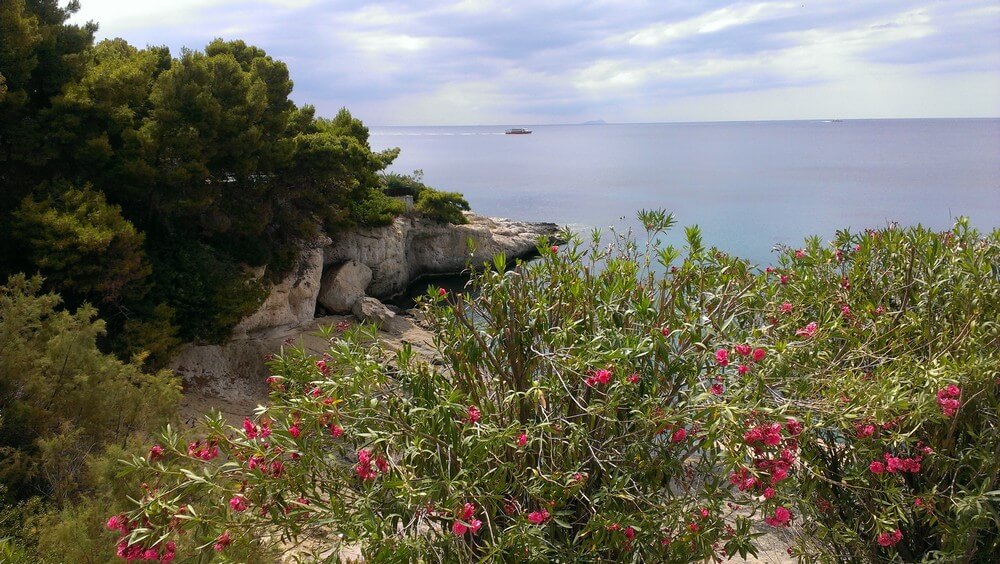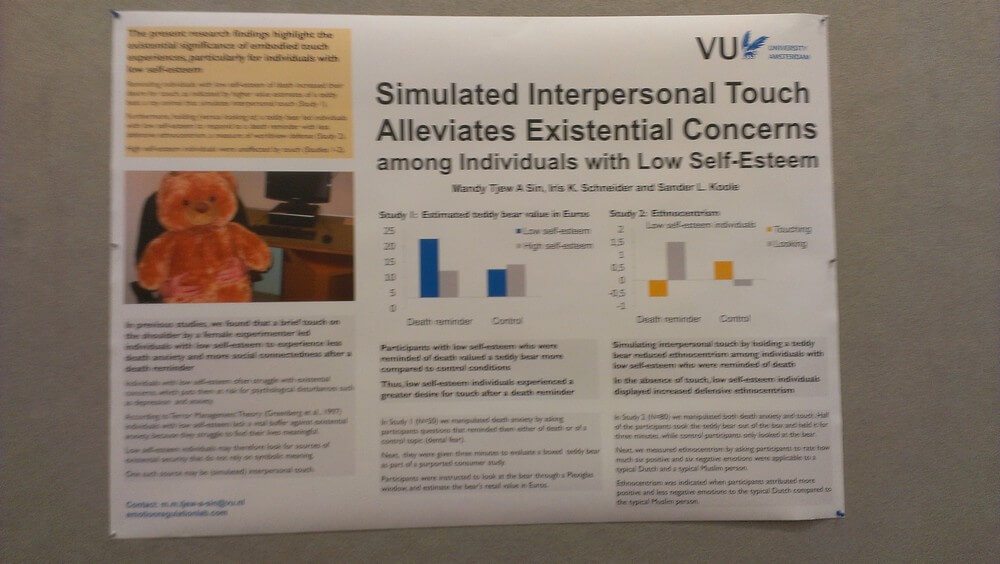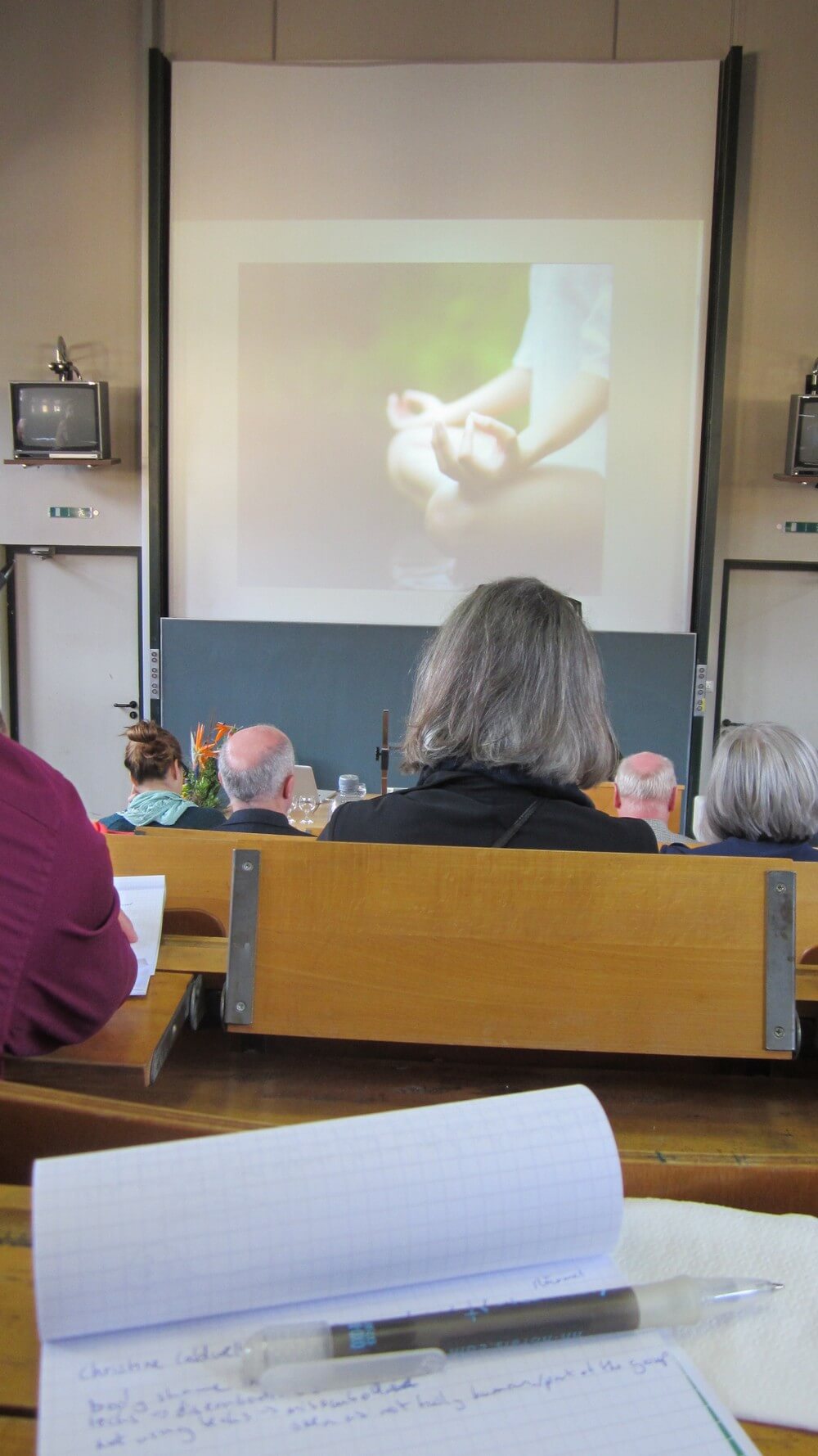For my postdoc research at the VU University, I have been setting up an ambulatory study at a school to measure 24 hour autonomic nervous system activity among young adolescents (13-14 year-olds). The study has an ecological momentary assessment component in the form of a small iPod that prompts the adolescents to fill out a questionnaire every hour or so. This allows us to take onto account their behavior, emotions and social surroundings throughout the day. We will try to associate this to several components of self-regulation, such as executive functioning, emotion-regulation, impulsivity and self-control. This research is part of NeuroLabNL research line 4, which focuses on the application of wearable biosensors. My research is mentioned in the recent (Dutch) blog post Ready to wear.
After months of preparation and anticipation, fifth Wearables In Practice Symposium was held at the VU University in Amsterdam on December 12th. It was organized by me and Prof. Eco de Geus. Overall, it was a great meeting with interesting talks, discussions, conversations, workshops. Lots of familiar faces. It was my first time officially ‘hosting’ the event, which was a really rewarding experience. The event is covered in a post on Wearablesinpractice.com and in Dutch on the NeuroLabNL website.
I went there with two of my colleagues, who strapped me to the VU-AMS device beforehand. I introduced the QS crowd to the Wearables In Practice Symposium that we are organizing on the 12th of December, and showed the signals we could measure in real-time with the VU-AMS device using Bluetooth. People seemed to find that the most interesting part of the talk. Very diverse crowd, but positive first experience.
We are happy to announce the program of the 5th Wearables in Practice Symposium, which will be held at the Vrije Universiteit Amsterdam. Previous editions were held at TNO Soesterberg and the University of Twente. Wearables In Practice is a growing network of scientists, developers and users of wearable biosensors, including people who work in care, forensics and the safety domain, and scientists from affective computing and health/clinical disciplines. A variety of professionals were found willing to contribute to our program. Two of our speakers will give keynote lectures, Mark Hoogendoorn from the department of Artificial Intelligence at the VU will talk about Machine Learning and sensory data, and Hans Bussmann of the Erasmus Medical Center will talk about wearable sensors applied to the rehabilitation of patients.
During the lunch, there is the possibility to present a poster or to show a short demo. You will have the opportunity to ask questions, and to exchange information and ideas. After the lunch break, you may choose one of the two hands-on workshops: one will be about the VU-AMS ambulatory monitoring system for measuring Autonomic Nervous System Activity, including ECG, ICG and skin conductance, and the other will be about providing HR feedback using the Sense-IT platform by the University of Twente. We hope it will be an informative and inspiring day for all attendees.
The presentations start at 10, and end at 16:30, but you are welcome to stay for drinks and snacks until 18:00.
Registration
You may only attend by registering using the following form: https://goo.gl/forms/TlF5IyM2PipBjivO2
We can accommodate a maximum of 100 participants, so it is recommended to register as soon as possible.
Poster or demo
If you would like to present a poster or demo, please e-mail Mandy at [email protected] with a short description before the 24th of November.
Information for your visit
The symposium is held at the main building of the Vrije Universiteit Amsterdam. The address is: De Boelelaan 1105, 1081 HV Amsterdam. The Symposium is held in the Agora rooms 1, 2 and 3 on the third floor. When you enter the main building, you can head left to take an elevator up. You may enter Agora room 1 for the Symposium.
Amsterdam Zuid is the nearest train station (10 minute walk).
We kindly ask you to bring your ID for identification.
If your diet is not included in the registration form, contact Mandy at [email protected].
Join the Wearables In Practice LinkedIn Group for general news and updates
I just published the data paper describing my Frontiers article Terror Management in a Multicultural Society: Effects of Mortality Salience on Attitudes to Multiculturalism Are Moderated by National Identification and Self-Esteem Among Native Dutch People. The data is now available at the DANS data archives for permanent storage and access. The last element, the data paper that describes the data, is now available Open Access at the Journal of Open Psychology Data. We hope to continue sharing our data in the future.
I just published the data of my Frontiers article Terror Management in a Multicultural Society: Effects of Mortality Salience on Attitudes to Multiculturalism Are Moderated by National Identification and Self-Esteem Among Native Dutch People at the DANS data archives for permanent storage and access. The dataset contains 11 files, including the data and syntax to reproduce the findings in the published paper, as well as supplementary information and exploratory analyses. The final step will be the publication of the data paper, which is currently under review.
It took a while, and it was a bit of a struggle, but my article: “Terror Management in a Multicultural Society: Effects of Mortality Salience on Attitudes to Multiculturalism Are Moderated by National Identification and Self-Esteem Among Native Dutch People” just got published Open Access in Frontiers. I am glad it found a home. Next step is to publish a data paper and the data files open access as well, might take a while… but stay tuned!
The abstract is as follows: “Terror Management Theory (TMT; Greenberg et al., 1997) proposes that mortality concerns may lead people to reject other cultures than their own. Although highly relevant to multiculturalism, TMT has been rarely tested in a European multicultural society. To fill this void, two studies examined the effects of mortality salience (MS) among native Dutch people with varying levels of national identification and self-esteem. Consistent with TMT, MS led to less favorable attitudes about Muslims and multiculturalism among participants with high (rather than low) national identification and low (rather than high) self-esteem (Study 1). Likewise, MS led participants with high national identification and low self-esteem to increase their support of Sinterklaas, a traditional Dutch festivity with purported racist elements (Study 2). Together, these findings indicate that existential concerns may fuel resistance against multiculturalism, especially among people with low self-esteem who strongly identify with their nationality.”
For the very first time, I am organizing something relatively big, namely the fifth edition of the Wearables in Practice Symposium hosted by the Vrije Universiteit. This symposium bridges science and practice within the field of wearable biosensors. Presentations and interactive workshops explore the possibilities and impossibilities of the application of wearables.
The symposium is intended for researchers, as well as a variety of professionals, working for example in care, forensics or the safety domain, and scientists from affective computing and health/clinical disciplines. I’m learning a bunch and enjoy the responsibility that comes with it. Join the LinkedIn Group Wearables In Practice for general news and updates.
I am here to update on myself and the direction my career is taking. In February, I started a Postdoc at my university, the Vrije Universiteit Amsterdam. It is a 1,5 year gig at the Biological Psychology department on the same floor as Clinical Psychology department, my previous employer. The gig is part of the large interdisciplinary, multi-university research project NeuroLabNL, which has the main focus of increasing self-regulation ability among young people. Poor self-regulation is related to numerous outcomes rerelevant to young people, including learning outcomes, bullying and being bullied, and anti-social behavior. Therefore, there is a research line, and team addressing each of these domains within NeuroLabNL with the ambitious goal of investigating how to increase self-regulation among young people and improve their learning and school outcomes, and their social and societal outcomes. My job and team part of Line 4: Developing novel physiological measurement devices, Wearables that can improve self-regulation ability. My job is to do a literature search, and write a review that provides an overview of current biological measures that can be measured using existing Wearables that can inform young people about their self-regulation ability and related behavior. I am also helping to manage a LinkedIn Group called Wearables In Practice. Lastly, we are working with two research lines to set up ambulatory research projects to gather data to learn about the most relevant biological measures that are informative in creating useful Wearable devices for youngsters.
On the 6th of April, 2018, the 4th edition of Wearables In Practice (WIP) took place. It was hosted by the Human Factors department of TNO at Soesterberg. This symposium aims at crossing the bridge between science and practice within the field of wearable biosensors. Presentations and interactive workshops will explore the possibilities and impossibilities of the application of Wearables. The symposium is intended for psychological researchers, as well as a variety of professionals, working for example in care, forensics or the safety domain, and scientists from affective computing and health/clinical disciplines. My poster represented the interdisciplinary research team working on NeuroLabNL research line 4. Check out the poster below.
I attended an early morning breakfast workshop for researchers on how to get funding for your business idea. It was organized by IXA. Heard about a lot of interesting ideas that other participants had. I pitched mine to the group and got some feedback. Overall, it was a low-key, informative meeting.
After our article was published in Het Parool, I was invited to talk about my research Live on a popular Dutch radio show called Spijkers met Koppen. It was my radio debut! As in the article, the talk centered on cuddle therapy, as explained by the other guest, cuddle therapist Carollyne H.R. Tjong Ayong, owner of Lepeltje Lepeltje. I mostly explained the benefits of affective touch, as well as some of my research findings. The recordings are in Dutch and can be watched at the website of Spijkers met Koppen. After my couple minutes of fame, I received a nice bottle of wine to take home.
I was contacted by a journalist a couple of weeks ago. She was writing an article about cuddle therapy, a relatively new phenomenon in the Netherlands. A cuddle therapist is not a certified therapist, it’s simply someone, generally female, who is willing to cuddle you and keep you company for a fee. It speaks to the great need for touch, especially for people with limited access to affective touch or social connection more generally. I recently tried a type of physiotherapy called haptonomy, which is quite common in the Netherlands, and often covered by one’s health insurance. It heavily involves the use of interpersonal touch to connect with one’s body to learn to regulate emotion. It wasn’t my cup of tea, but it’s a solid option for the touch-deprived, maybe more useful than getting a massage. Anyway, regarding the article, I simply answered some questions about the psychological and physiological effects of affective touch. The article is in Dutch, and can be accessed here.
Recently, I attended the second IASAT conference held in Liverpool. A colleague pointed me to their website and the conference, and I signed up for it within the week. It was a good experience. Small group of 80 people or so. Felt like an expert meeting. Very informative and enjoyable talks that broadly relate to topics that I am interested in and/or doing research on, including talks about all the ins and outs of affective touch, simulated affective touch using devices, attachment, and parenting influences of the mother and the father. I am finishing up my dissertation in the coming months, so this was a very useful boost of information that I will be using in my writing. Check out their website! https://iasat.org/
As part of the Amsterdam Science and Innovation Award, Viola Tjew-A-Sin and I attended the Business and Science event, which consisted of six speed dates with companies, to talk about our product idea ‘Respiro’. It was a fun event and we learned a ton about the services companies could offer us, and also about how to patent our idea and eventually bring it to the market. It gave us a lot to think about and to consider. We are looking into subsidies and grants and the like.
It’s been a month since my arrival in Tucson, Arizona to work on the ECG data that I collected for the hyperscanning study at University of Tuebingen, Germany. I overestimated the quality of the data and underestimated the amount of work… After a full month of constant struggling with the data and just a week or two before my departure, I managed just today to get the data cleaned and in the proper format and structure for running the coupled oscillator models. I’m very excited! There is much more to be done, but I’m starting to see some end to it. I’ll describe some of the software I used to get where I am.
My data was recorded with Brainvision Analyzer, and the raw data was therefore in .eeg, .vhdr and .vmrk format. I used the Biosig extension of EEGlab, a toolbox in Matlab, to read the .vhdr files and save them in .EDF format. I then used EDFbrowser to filter the data and export to ASCII. I tried using Kubios to create the IBI series but their Standard HRV product was too limited in its functionality to be useful to me. Moreover, I needed my IBI in a time series to be able to line up the data points of the dyad pairs. So I switched to QRSTool to painstakingy mark heart beats by hand, although this did allow me to use almost 100% of the data in the end. This part took the longest by far, and I spent two weeks full-time doing this as accurately as possible. I then used the CMetX software to calculate the IBI time series, interpolated at 10Hz to keep the data as continuous as possible. Finally, I used Excel to to put together the ‘monster’ datafile that we could use for modeling. A very dedicated young man is working with Prof. Butler to create an R Package that can do all the calculating and modeling for us. It’s a work in progress but a great project with lots of potential. Check it out here. Meanwhile, we will use Matlab code to do the plotting. It’s already been quite the journey and learning process… with even more exciting discoveries ahead!
It’s been a while since I’ve updated. I’m currently in Tucson, Arizona! I arrived about a week ago, and had a short overlay at JFK airport. I’m staying at a great loft apartment that has all the essentials as well as modern conveniences (like an insinkerator!) that you can imagine. I can walk (or bike) to the University of Arizona in about 25 minutes. The campus is big and impressive, and the people are relaxed and friendly. I went to the UofA to check in and I’ve met up with the Professor that I’m visiting. Prof. Emily Butler is very friendly, welcoming and easy to talk to. She’s also working on very exciting developments on (the modeling of) emotional co-regulation. This is the main reason I’m in Tucson, and I’ve spent the last week working on and prepping the heart rate data I collected in Tuebingen, Germany. It’s not without its’ challenges, but I’m making progress. The big Goal is to try and analyse and understand this data, and perhaps to collaborate on a paper together. I’ll be in Tucson until May 16th, after which I’ll have a short, hopefully well-deserved, vacation with my partner’s family in Upper Sandusky, Ohio.
A month ago, I received an e-mail about the Amsterdam Science and Innovation Award of which the grand finale is held at my university, the VU. It piqued my interest immediately. I decided to involve my sister, Viola, who is a talented industrial design engineer with a focus on user-centered design and a big interest in psychology. Together, we brainstormed about different applications of my specific research expertise on solving societal issues, and also about research ideas that could be incorporated in a commercial product. After a month of frequent meet-ups, we ran with the latest version of our idea and entered the competition. There was very little time for further fine-tuning, so we hope to have captured the gist of our (pretty cool) idea.
For five days in the past month, I’ve been getting together with a few fellow lab members to figure out (and try out!) the brand new NIRSport equipment, which is advertised as a mobile fNIRS system that is suitable for studies involving movement. A couple of my colleagues already have ambitious plans to run experiments using this equipment in Spring or Fall of this year, perhaps even outside the lab. It is definitely fun to toy with, even though we are constantly problem-solving at this early stage. Luckily, the experienced tech personnel help us experiment with possible solutions. For instance, we’ve been able to tweak the caps a bit to minimize pain and discomfort for participants who need to wear the device for half an hour or longer. We’ve also tested the system on every hair color, and dense black hair is definitely the biggest challenge for getting good signal quality. Our most promising solution for that recurring problem is to look into brush-like optodes that other fNIRS groups have had good results with. I will leave the equipment be for now, and start focusing on my writing and publishing again. If everything works out with the NIRSport, the team should be able to run some fun experiments fairly soon.
About one week ago, I received word from the PhD Education Committee (PEC) of my faculty that my Talent Fund application has been granted. I applied for this grant back in October, when I was visiting the University of Tübingen. The fund pays for a two month stay in Tucson, Arizona in order to collaborate with dr. Emily Butler, an expert on emotional co-regulation, and to visit her Health & Interpersonal Systems (HIS) Research Group. The goal is to work on the pile of physiological data I collected during the hyperscanning study in Tübingen, which involved pairs of friends sharing an emotional experience. So it looks like I’ll be traveling again in April and May, before finishing my dissertation in the summer.
Incidentally, I just finished the introductory Coursera course: ‘Bayesian Statistics: From Concept to Data Analysis’. It was rather heavy on math and I struggled quite a bit, finishing only a couple hours before the deadline. Still, I think it might come in handy for at least some of the data analyses.
After an almost 3 month visit to the Psychophysiology & Optical Imaging research group, it’s time for some thanks and goodbyes. I’ve received excellent help running the study from the tech staff. We’ve collected data of an even 20 dyads who went through two conditions/sessions, so the data will keep us all quite busy for the time to come. What makes this research group pretty great is that it resembles a small close-knit community where people share their resources and help and look after each other. Haven’t really experienced that before in any other group, it’s something to cherish. And even though it was exhausting at times, and a mountain of work, I’m happy to have climbed those steps up to the University building in those early mornings to bring home this project. Here are three postcards I saw at the department that sum up my time in Tübingen quite accurately.
Happy to report that I’ve finished the ‘Improving Your Statistical Inferences’ course on Coursera. I think I was five weeks behind on the assignments at some point, but I managed to find some free time to catch up and then power through the rest of the course (had to finish the hyperscanning set-up first). The course included a short preregistration assignment using the Open Science Framework. I’ve wondered for a while now how much work it would be to preregister a study, so it was nice to go through a short version of that process. It’s not time-consuming at all once you get the hang of it. I highly recommend the course.
Unexpectedly, it also piqued my interest in Bayesian statistics, so I signed up right away for ‘Bayesian Statistics: From Concept to Data Analysis’, which was very well-rated on Coursera. It doesn’t start until mid-December, so in the meantime I’ll try to learn some MATLAB basics, as I’m pretty sure that’s what I’ll need to analyse the NIRS data. I’ll be trying out the ‘Introduction to Programming with MATLAB’ course, and will hopefully post an update about my progress before the end of this year.
It’s been two months since I’ve started setting up the hyperscanning study at the Psychophysiology & Optical Imaging research group. After a month of trying out and tweaking our experimental design, which is quite intricate (fNIRS, ECG, video and audio recording), we started running our first dyads early November. I’m happy and relieved to report that the experiment is running smoothly now, mostly thanks to the excellent assistance that I’m receiving from the tech personel here, who really seem to form the heart or core of the group. Students sign up readily for the study, and we’ve already scheduled them on the remaining time we have in the lab. I have about three weeks left before my visit at the University of Tübingen comes to an end but I predict a succesful and happy ending. Meanwhile, my appreciation of and admiration for the research group has only grown. Expertise, professionalism… but at the same time a very informal atmosphere with lots of joking and laughter. It’s not hard to see why people want to become and stay a part of this group.
I had to double-check, but it seems that I’ve neglected to write about taking the 2-day KLI course ‘Designing Studies with High Informational Value’ back in September, 2015, held at the Vrije Universiteit. It was a very good course, and especially useful for graduate students and anyone who is contemplating a career in (psychological) science. The course was taught by Dr. Daniel Lakens of the Eindhoven University of Technology, and by Dr. Ellen Evers and Dr. Uri Simonsohn of The Wharton School, University of Pennsylvania. For me personally, it was an eye-opening and highly informative course (I did my first P-curve analyses on my own data during the lectures) and now the course is available on Coursera. Since I’m setting up my research project here in Tuebingen during the week, I’m mostly enjoying it as a refresher course on the weekends.
It’s already been a week since I’ve started working at the University of Tübingen, at the Psychophysiology & Optical Imaging research group led by Dr. Ann-Christine Ehlis. The group is located in the Universitätsklinikum Tübingen for Psychiatry and Psychotherapy. It’s a much larger group than the one I’m part of at the Vrije Universiteit, but the topics researched here seem more cohesive. The group mainly focuses on neuro-imaging and other physiological measurements among patients with mental disorders, as well as among healthy (mostly student) volunteers. In the coming months, I’ll be setting up and running a hyperscanning study using near-infrared spectroscopy among close friends/dyads during a social sharing task. I just recently received keys and an employee card from the University and was assigned a room to work in today. So I’m still at the start of the project, but my impressions are very positive, and I’m getting more and more excited about learning some new techniques and skills at this lab group. Plus, Tübingen isn’t a bad looking place to work for a couple months. Not bad at all…
Last week, I received word that the EEG data that I had made openly available has been entered for the Dutch Data Prize 2016 by the editor of Data in Brief. According to their website, the Dutch Data Prize is awarded to researchers who make an extra effort to document their data and make it available to others. Sounds like a really cool initiative! I was very (pleasantly) surprised (and a bit proud) to learn that my dataset may have been of value to other people:
It’s one of the most highly downloaded datasets from those published in the Data in Brief journal. On average it’s downloaded over 50 times/month from ScienceDirect only, indicating that it’s very valuable to the research community. Next to it, this is a very special dataset which showcases a novel solution of knowledge dissemination and data documentation, making it easy to discover, access and reuse. This solution combines: (1) 171 data files deposited in a trustworthy digital repository (DANS); (2) the description of this dataset published in the open access data journal Data in Brief explaining how the data was acquired; and (3) the full length research article published in the journal Neuroscience Letters presenting the actual results of the data analysis and main outcomes of this study.
The data files and the data descriptor are publicly available, under CC-0 and CC-BY licenses respectively. The data files were curated by the DANS data curators and the data article was peer-reviewed by the domain experts. The combination of peer review and data curation provides a double quality stamp and ensures that the data is well documented, collected in accordance with the state of the art methods and protocols and that data has potential for reuse.
I know there will be some very strong entries, so I don’t expect a nomination. But, finding out about the potential value of my research data really cemented my desire to make all my data, and if possible all my papers, available Open Access. For those interested, the award ceremony is held November 9th at NWO in The Hague. The Dutch Data Prize 2016 consists of a sculpture and 5k to be spent on making data accessible.
Earlier this month, I received an Open Access grant from NWO (Netherlands Organization for Scientific Research) to cover the publication costs for “Data on simulated interpersonal touch, individual differences and the error-related negativity” in the journal Data in Brief.
I’ve recently started learning R again, picking up where I left off last year. It’s an introductory course (three afternoons) for PhD students and other faculty, organized through the Kurt Lewin Institute. Here are a few online resources that I found especially helpful and accessible for a beginner. These are free, friendly, online self-paced introductory courses on using R/RStudio. I did them about half a year ago in my spare time/weekends and really enjoyed myself.
Try R by Codeschool
Introduction to statistics by Datacamp
Introduction to R data science by edX
I wrote a post about the Scientific Integrity PhD course of the VU medical center last December. Related to that course, I recently received an e-mail about the first conference of the Netherlands Research Integrity Network, which is held in Amsterdam. I signed up for it, but may not be able to attend it. Nonetheless, while browsing through their website, I noticed that the VU University Library was organizing a very interesting seminar on publishing and integrity, and more specifically about whether openness and transparancy can decrease research misconduct (such as the use of Questionable Research Practices) and increase the quality of scientific publications (through Open Access policies) and open peer review. Follow this link to see an overview of the topics and speakers.
Questionable research practices, the importance of preregistration, and the flaws of the peer review system were already familiar topics to me. However, the talk on Open Access publishing provided some very interesting information and helped me understand my own discomfort in paying to openly publish my research. Apparently, charging huge fees for Open Access publishing can be an extremely lucrative business model. There are many online articles on the issues surrounding such business models and their effects on the scientific literature. For example, you can start reading here, here, or here (Dutch article).
The final version of our data paper titled “Data on simulated interpersonal touch, individual differences and the error-related negativity” has been published in Data in Brief, an Open Access journal. The full reference is: Tjew-A-Sin, M., Tops, M., Heslenfeld, D.J., & Koole, S.L. (2016). Data on simulated interpersonal touch, individual differences and the error-related negativity. Data in Brief, 7, 1327–1330. Click here to check it out.
Abstract: The dataset includes data from the electroencephalogram study reported in our paper: ‘Effects of simulated interpersonal touch and trait intrinsic motivation on the error-related negativity’ (doi:10.1016/j.neulet.2016.01.044) (Tjew-A-Sin et al., 2016) [1]. The data was collected at the psychology laboratories at the Vrije Universiteit Amsterdam in 2012 among a Dutch-speaking student sample. The dataset consists of the measures described in the paper, as well as additional (exploratory) measures including the Five-Factor Personality Inventory, the Connectedness to Nature Scale, the Rosenberg Self-esteem Scale and a scale measuring life stress. The data can be used for replication purposes, meta-analyses, and exploratory analyses, as well as cross-cultural comparisons of touch and/or ERN effects. The authors also welcome collaborative research based on re-analyses of the data. The data described is available at a data repository called the DANS archive: http://persistent-identifier.nl/?identifier=urn:nbn:nl:ui:13-tzbk-gg.
Our paper titled “Effects of simulated interpersonal touch and trait intrinsic motivation on the error-related negativity” has been published in Neuroscience Letters. It’s Open Access, so feel free to look it up. The full (APA) reference is: Tjew-A-Sin, M., Tops, M., Heslenfeld, D.J., & Koole, S.L. (2016). Effects of simulated interpersonal touch and trait intrinsic motivation on the error-related negativity. Neuroscience Letters, 617, 134-138.
Abstract: The error-related negativity (ERN or Ne) is a negative event-related brain potential that peaks about 20–100 ms after people perform an incorrect response in choice reaction time tasks. Prior research has shown that the ERN may be enhanced by situational and dispositional factors that promote intrinsic motivation. Building on and extending this work the authors hypothesized that simulated interpersonal touch may increase task engagement and thereby increase ERN amplitude. To test this notion, 20 participants performed a Go/No-Go task while holding a teddy bear or a same-sized cardboard box. As expected, the ERN was significantly larger when participants held a teddy bear rather than a cardboard box. This effect was most pronounced for people high (rather than low) in trait intrinsic motivation, who may depend more on intrinsically motivating task cues to maintain task engagement. These findings highlight the potential benefits of simulated interpersonal touch in stimulating attention to errors, especially among people who are intrinsically motivated.
I recently attended the Master defense of Viola Tjew-A-Sin (my sister), who graduated with top marks from the two-year Design for Interaction Master at TU Delft. Her project was about the design of a mediated (warm) touch interaction that could increase empathy or restore a sense of connection between people with alexithymia, who struggle to recognize and express emotions, and their romantic partners. Check out the project idea and summary here, and her design portfolio at violatjew.nl.
I recently finished a very good 3-day course organized by PCDI called Employability Outside Academia. It’s a course for Postdocs and PhDs that is given in small groups and led by an experienced coach. Although it is focused on helping early career researchers make the transition out of academia (and into industry for example), the course is also for researchers who want to figure out whether they want to stay. During the course, there is a lot of focus on personal interests, competencies, skill gaps, talents and ambitions. There are plenty of practical exercises and resources that help you discover them. At the end of the course you end up with about 60 pages of personal insights to help you design your career to your liking and lots to think about. I highly recommend the course, especially if you started your PhD at a young age/fresh out of university.
I participated in a two-day ‘blended’ (online plus class module) course on Scientific Integrity at the VU Medical Center. The course is part of their PhD Training and Education program, and was mostly attended by PhD students in the medical field. It was interesting to learn about the issues that they struggle with in their research, especially since their choices may have severe health implications for a great number of people. At one of the class meetings, the lecturer asked us to name the biggest case of scientific fraud in the Netherlands. The answer was overwhelmingly in favor of the social psychologist Diederik Stapel, whose misconduct was covered extensively by Dutch news agencies. In contrast, very few had even heard of the option the lecturer introduced: Don Poldermans, a former cardiovascular medicine researcher (and head of his unit) whose fabricated data was used in 2009 to (mis)inform European hospital guidelines, which were not corrected until August 2014. It is very likely that his data fabrication has led to many unnecessary patient deaths. Although the online module, which was focused on an US audience, was less relevant to the Dutch context, I greatly appreciated the personal touch in the subgroup sessions, in which we openly and extensively discussed the ethical dilemmas in our own work and dissected them as a group: what would you do and why?
I gave a guest lecture/workshop for the research master course The Psychology of Emotion Regulation: From Basic Principles to Clinical Applications for first- and second year students of the research master Clinical and Developmental Psychopathology at the Vrije Universiteit Amsterdam.
The workshop was focused on recent findings related to emotional coregulation, stress-buffering effects of social support/frequent hugs, social sharing of emotion, and the role of individual differences such as attachment style in social emotion expression and regulation. A selection of the class material:
Butler, E. A., & Randall, A. K. (2013). Emotional coregulation in close relationships. Emotion Review, 5(2), 202-210.
Cohen, S., Janicki-Deverts, D., Turner, R. B., & Doyle, W. J. (2015). Does hugging provide stress-buffering social support? A study of susceptibility to upper respiratory infection and ill-ness. Psychological science, 26(2), 135-147.
Rimé, B. (2009). Emotion elicits the social sharing of emotion: Theory and empirical review. Emotion Review, 1(1), 60-85.
I was invited to the Hack the Body expert meeting on synchrony, organized by Baltan Laboratories and Holst Centre. It was part of the 2015 TodaysArt festival, specifically the Bright Collisions Symposium. I prepared a short presentation, but ended up using the material mostly for discussions with the group. The meeting brought together scientists, artists, engineers and product developers to discuss topics related to biometric synchronization: “Can two or more people synchronize their biometric signals (heart beat, respiration, gsr-sweat) with each other? Can synchrony of these signals be induced? What measure of synchrony can be established? How can synchrony be represented, modeled within the environment, and used as a catalyst for feedback? What hardware can we use to measure biometric sensing and feedback such as ECG, EEG, GSR?”
On the 3rd of July, I participated in the 1st meeting on the study of social and affective touch in the Netherlands. The main goal of the meeting was to explore possibilities and interests of Dutch scientists, tech people and artists who are involved in this topic to collaborate and regularly come together. We could then share ideas, insights, equipment etc. It was very inspiring to meet people from different disciplines who share a similar interest. For instance, in their art project E.E.G. KISS, artists Karen Lancel and Herman Maat of TU Delft use ultra-portable EEG headsets to measure the brain activity of romantic partners while they are kissing, hugging and touching each other. I presented some of my recent findings on the soothing effects of soft materials, especially for insecurely attached individuals. My sister (and soon-to-be industrial engineer specialized in Design for Interaction), Viola Tjew-A-Sin, was also invited to the meeting. Her graduation project is about mediated social touch, specifically the aspect of warmth, and how it may be used to increase empathy and connectedness between people with alexithymia and their loved ones.
The past week, I had the pleasure of taking part in a one-week NIAS-Lorentz workshop on “Social support TAT: Theory, Applications, and Technology” that aimed to bring together different (e.g., biological, clinical, neurological and psychological perspectives) on social support. The workshop also mixed scientific talks with hardware and software development by inviting people from both the scientific and the tech community. I very much enjoyed both elements of the workshop. Based on my poster abstract, I was invited to give a one hour talk on my research on touch and existential concerns, for which I also received a Best Paper award (also on behalf of my co-authors). For my presentation, I worked in findings from my newer line of research on loneliness and mental health (see abstract below). All in all, it’s been a very interesting and exciting week.
“Loneliness Moderates the Association Between Vulnerable Personality and Mental Health
A number of personality traits – such as low self-esteem, high neuroticism, high thought suppression, and high alexithymia- appear to reflect latent vulnerabilities, in that these traits are consistently predictive of poor mental health. However, not all people with vulnerable personality traits display poor mental health, suggesting that there might be moderating variables that determine whether these people’s latent vulnerability becomes translated into overt psychological complaints. In our research, we examined whether loneliness is one such moderating variable. Because people have an innate need for social connections with others, we suggest that loneliness is a critical circumstance that leads to deteriorations in mental health among people with vulnerable personality traits. I will present five studies, including three cross-sectional studies, one longitudinal study, and one experimental study, that support this line of reasoning. Taken together, these findings suggest that loneliness is a catalyst for the development of mental health problems among people with latent vulnerabilities in their personality functioning.”
I just recently attended the very first International Convention of Psychological Science (ICPS) in Amsterdam. It was a very nice, open and inclusive conference. I presented a new poster on how loneliness moderates the association between different vulnerability factors and mental health problems. This poster shows just some of my findings, but gives an idea of the broad scope of the effect.
I gave a talk at the EASP conference in Amsterdam on my embodied Terror Management research. It was part of the symposium: ‘What would you do under threat? Current and future directions in Terror Management Theory’. This was my first time presenting for an international audience at a big social psychology conference. It went very smoothly. I really enjoyed it, especially talking to people afterwards. You could tell that the people who showed up were really interested in either touch and/or research on existential psychology. I really liked the conference in general. It was very open and inclusive to everyone. I met some very nice people, enjoyed exploring Amsterdam and got to try out the Google Glass.
I presented my research on embodied terror management at the 2014 Kurt Lewin Institute Conference. This biennial conference is held at a large conference center in Zeist, surrounded by nature. On the morning of the second day, I got up early and enjoyed a very pleasant walk in the woods before joining the sessions again. To celebrate the 20th anniversary of the institute, everyone received a book showing the history and achievements of the institute and short interviews with all KLI alumni. It’s very interesting to read about the career paths that people took after getting their PhD.
Our paper titled “Embodied terror management: (Simulated) Interpersonal touch alleviates existential concerns among individuals with low self-esteem” was recently published in Psychological Science. It is based on some of the research on interpersonal touch that I did during my year-long internship at the VU University together with Sander Koole. I am very pleased that it made it into the world so soon. The research has been covered by a number of websites, some more accurate than others:
- The news item from the journal
- The Daily Mail
- A brief mention in De Wereld Draait Door (in Dutch)
- An interview with Sander (in Dutch)
I presented my touch research at the Dutch ASPO conference for social psychologists. This was the last year that a short peer-reviewed Dutch version of your article would be published in the conference book and the last time the conference was held completely in Dutch. It was a fun process to summarize my touch results in Dutch. I’m happy to have been part of these traditions, especially because it was for the last time.
I was selected (on a competitive basis) to participate in a very interesting, interdisciplinary summer school on the island of Aegina, Greece, on embodied intersubjectivity. They invited around 50 PhD students, post-docs, and other (mostly) young researchers and of course a large number of people to teach us. The presentations were given by leading researchers from the fields of experimental,developmental and social psychology, cognitive and social neuroscience, anthropology, primatology and philosophy. The programme included sessions on:
- 1st person perspectives of embodiment
- The embodied self in interaction with the world
- Ontogenetic and phylogenetic perspectives on social cognition
- Transition from 3rd person- to 2nd person perspective in social neuroscience
- Embodying other people’s minds and bodies
It was a very nice week with many interesting lectures, kind people, a beautiful location and great food. During the week, I also gave a short presentation on my work on touch and existential concerns, and I presented a poster afterwards on the same topic. Before I left Greece, I was able to sneak a very nice visit to the Acropolis and the Acropolis Museum.
I visited my first large international psychology conferences: the 2013 APS conference in Washington and also the preconference by the Society for the Study of Motivation (SSM). Sander presented our findings on touch during the symposium: “Embodying motivation: How bodily experiences shape our goals and desires”, which he co-chaired. At the APS conference, I presented a poster on the same research. It was a very exciting few days and I must have seen at least 40 presentations on so many different topics. I loved the wide variety of research fields and topics. I definitely would like to visit another APS conference in the future, and to present some research myself.
Sander and I wrote a review article for the Inquisitive Mind (or In-Mind; see In-Mind.org) on the effects of interpersonal touch. This on-line peer-reviewed magazine aims to make social-psychological research available to a broad audience by providing articles that are highly entertaining, educating and accessible. This was my first time working on an article that had to be accessible to a broach audience. We had to revise it quite a few times, but it was an exciting challenge. The title and intro of the paper are shown below:
“That human touch that means so much: Exploring the tactile dimension of social life
Interpersonal touch is a fundamental but undervalued aspect of human nature. In the present article, the authors review psychological research showing that even fleeting forms of touch may have a powerful impact on our emotional and social functioning. Given its significant beneficial effects, touch may be valuable as a therapeutic or health-promoting tool.”
We attended a conference on ‘The implications of embodiment: enactive, clinical, social’ as a lab group. This is my first week as a PhD Student, and my first meeting with the other lab members, so this is quite the start! The lab group will mainly research embodied emotion regulation, and is funded by an ERC grant that was awarded to Sander Koole last year. We will be working at the Clinical Psychology department at the VU. The conference was very interesting and unique with more exploratory as well as very experimental and data-heavy talks. I liked how casual the conference was, with informal dress code, lots of students and a surprising focus on meditation and dance. Sander gave a short but sweet presentation about our research on touch and existential concerns.
After a huge effort from Sander Koole (my internship supervisor) and I in the past half year or so, I recently received the Mosaic grant from the NWO (Netherlands Organization for Scientific Research). In January this year, I found out through a fellow student that I was eligible for this grant, but we only had a few weeks until the application deadline which included a detailed grant proposal. We had to work hard and fast to make the deadline. After making the first selection phase (41 out of 210) in February, I followed workshops to further develop my research ideas and to prepare a presentation to convince a multidisciplinary committee of professors to fund the project.
This summer, during my vacation, I was informed that I was one of 20 to receive the grant. Not long after, near the end of the year, NWO also held a short ceremony to award the grants in person. This was also the last time that the grant was awarded because of budget cuts, which does make it extra special. Even without applying for this grant, the last year at the VU has been a huge learning experience for me, and also very challenging, but I am very grateful that these efforts have been rewarded. It is the cherry on the cake. This is a short summary of the research project:
“The proposed research investigates how and why affirming feelings of belonging may improve academic achievement among ethnic minority students. The resulting insights will be used to design powerful new belongingness interventions. These interventions will be evaluated in terms of their effectiveness in closing the minority achievement gap.”
I have been testing participants for an EEG study on the effects of simulated interpersonal touch on a neural marker of error processing: the error-related negativity. I am slowly getting a knack for preparing participants for each recording. I learned of all the possible ways an EEG recording may be distorted, and the care that goes into obtaining clean interpretable data. Also, many technical problems needed to be solved and it was a challenge to deal with them and to liaise with the technical staff about these matters. Dr Koole found two psychology graduates who assisted me with the data collection. It was fun to instruct them all that I had learned during the past weeks.
After testing the last participants the previous week, two researchers from another research group started using the laboratory and equipment. Because they had no previous experience with EEG research, I was asked to instruct them on the workings of the lab and how to prepare participants. Again, it was nice to transfer the skills and knowledge I had learned to other people new to the technique. Soon after, I followed a brief one-day tutorial given by Dr Heslenfeld on how to analyze the EEG data using Neuroscan.
The research that I’m working on with Sander Koole at the VU University has found its way into the Dutch magazine Intermediair. It is an issue on ‘troost’, which is Dutch for ‘comfort’. In our research we find that interpersonal touch, but also touching soft stuffed animals, can be very comforting for people with low self-esteem.
